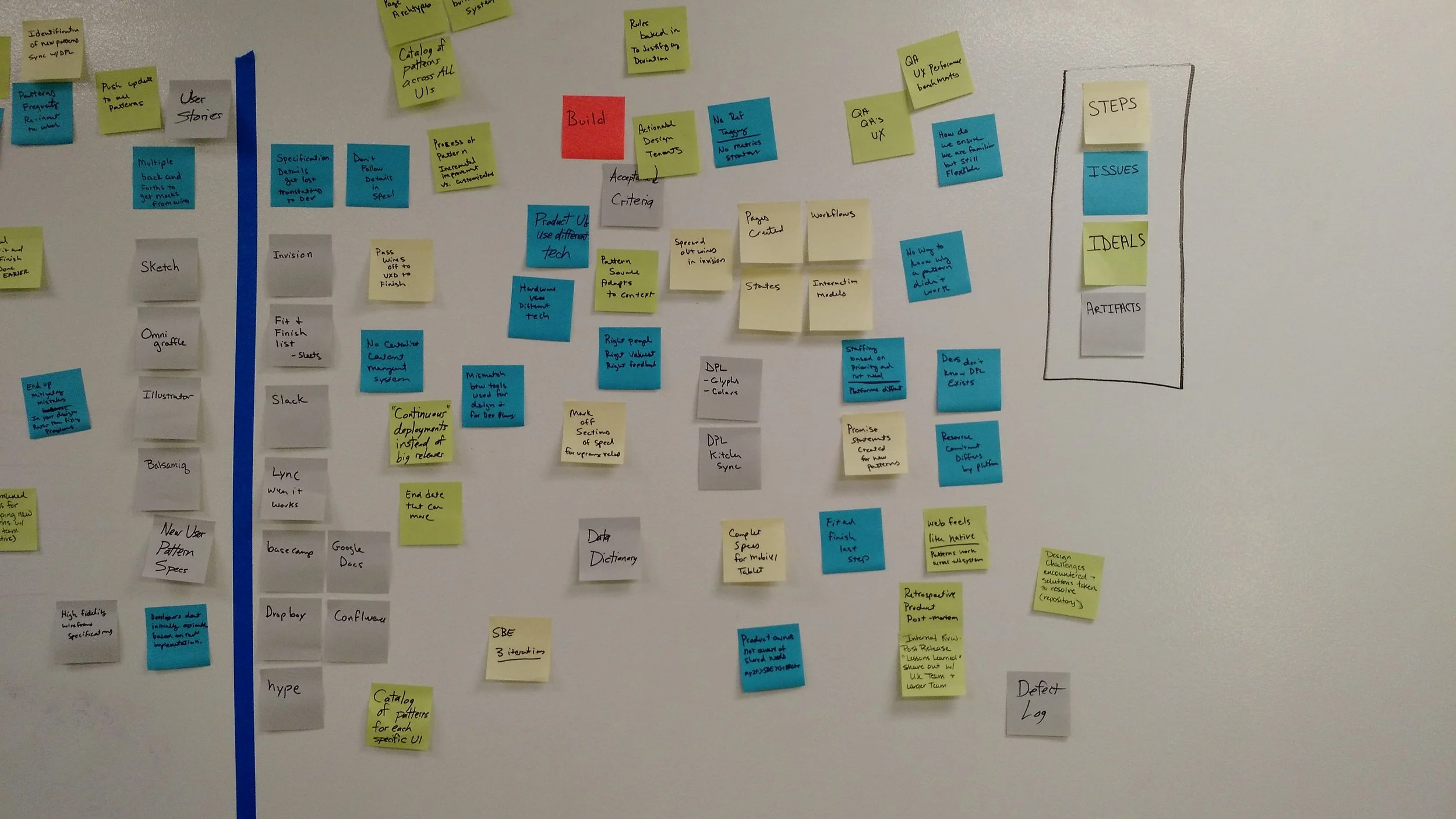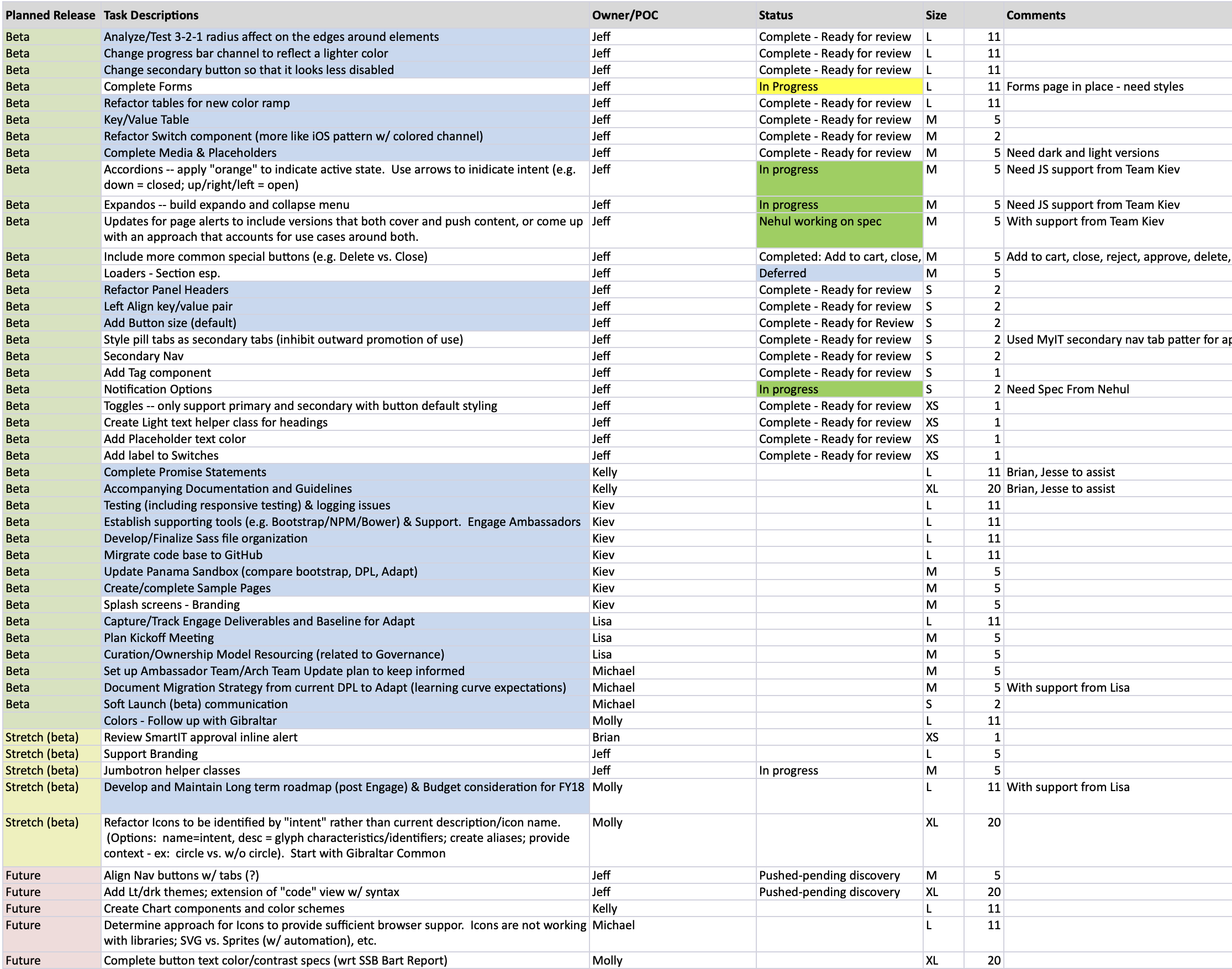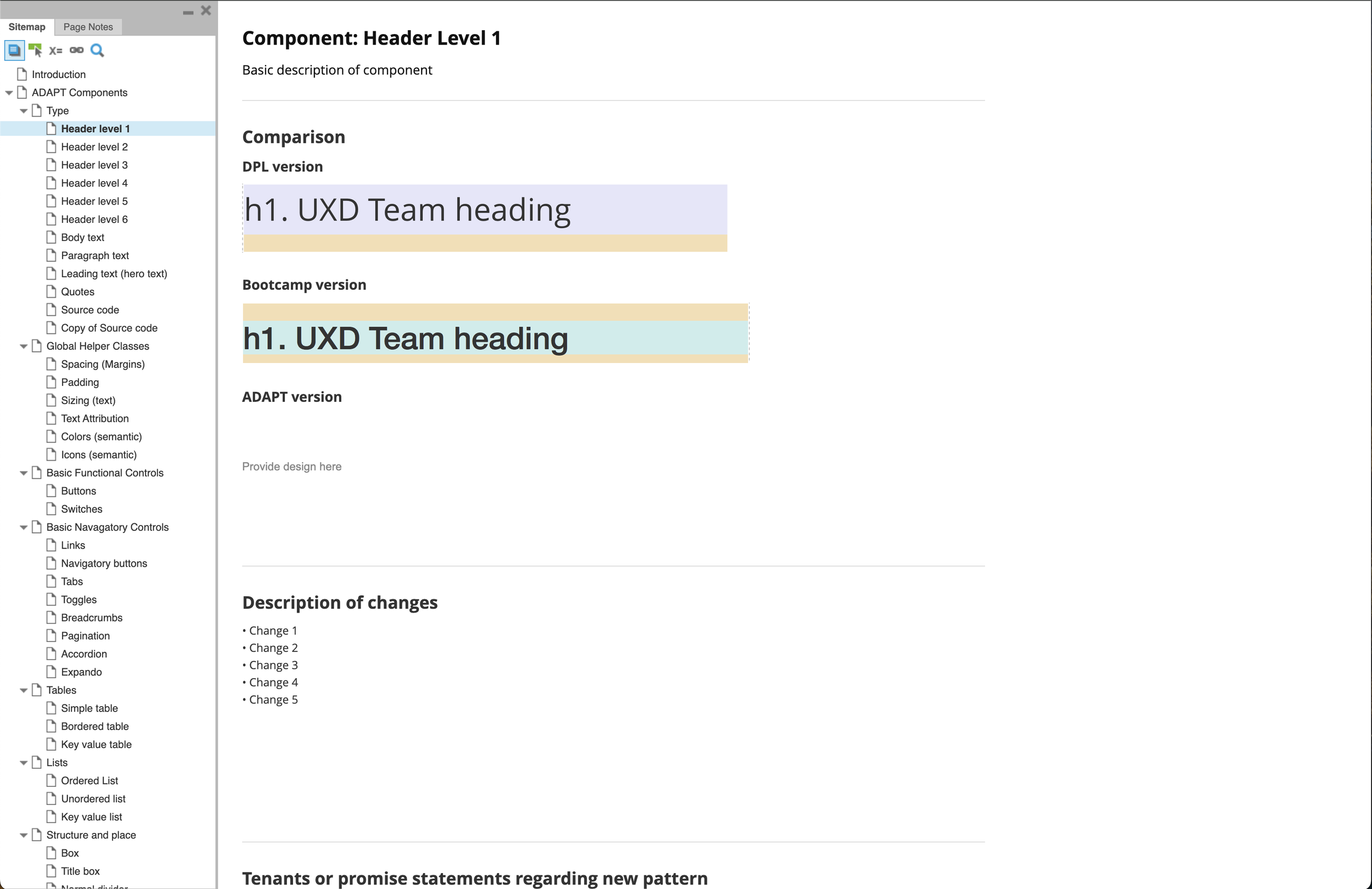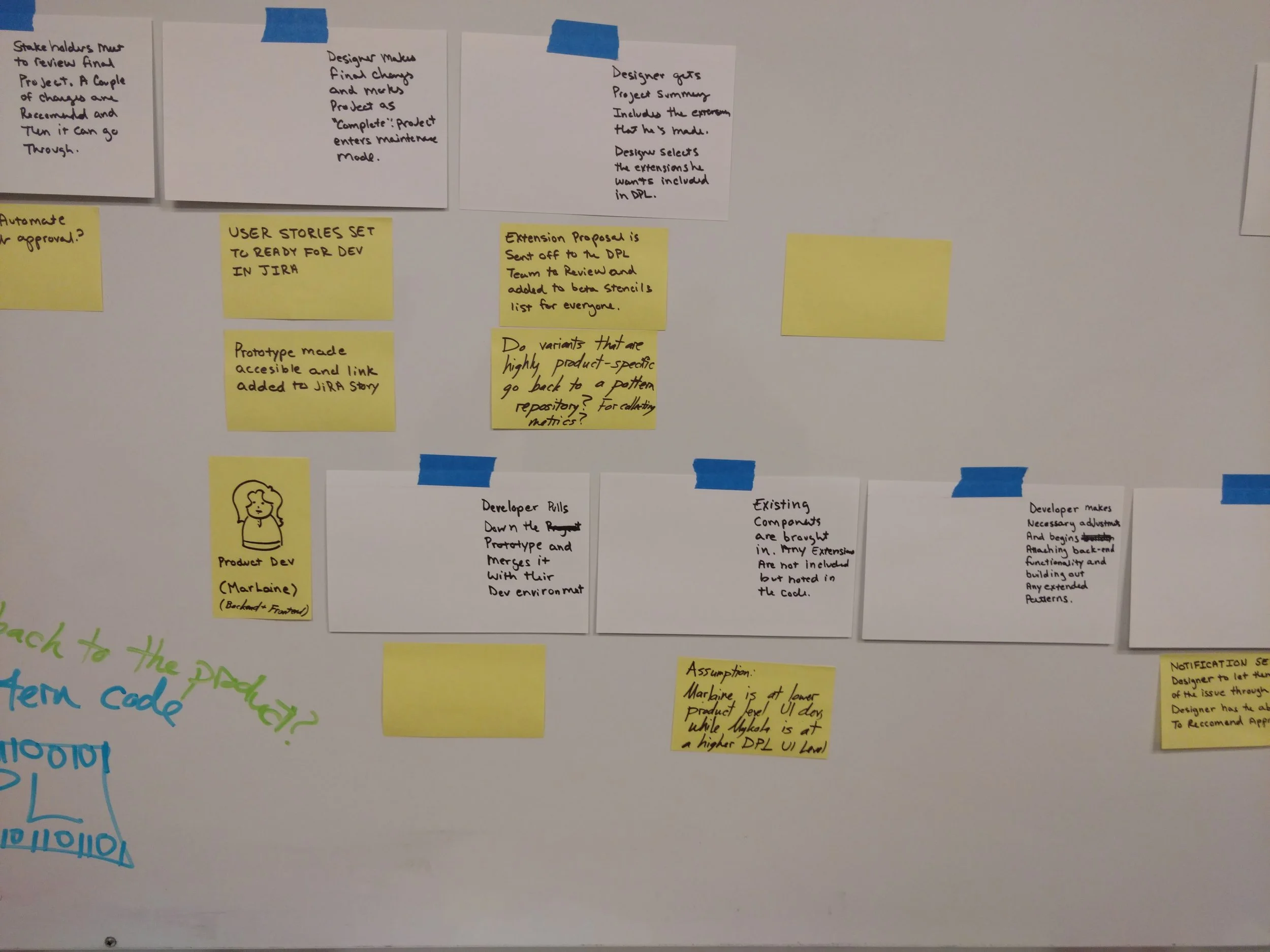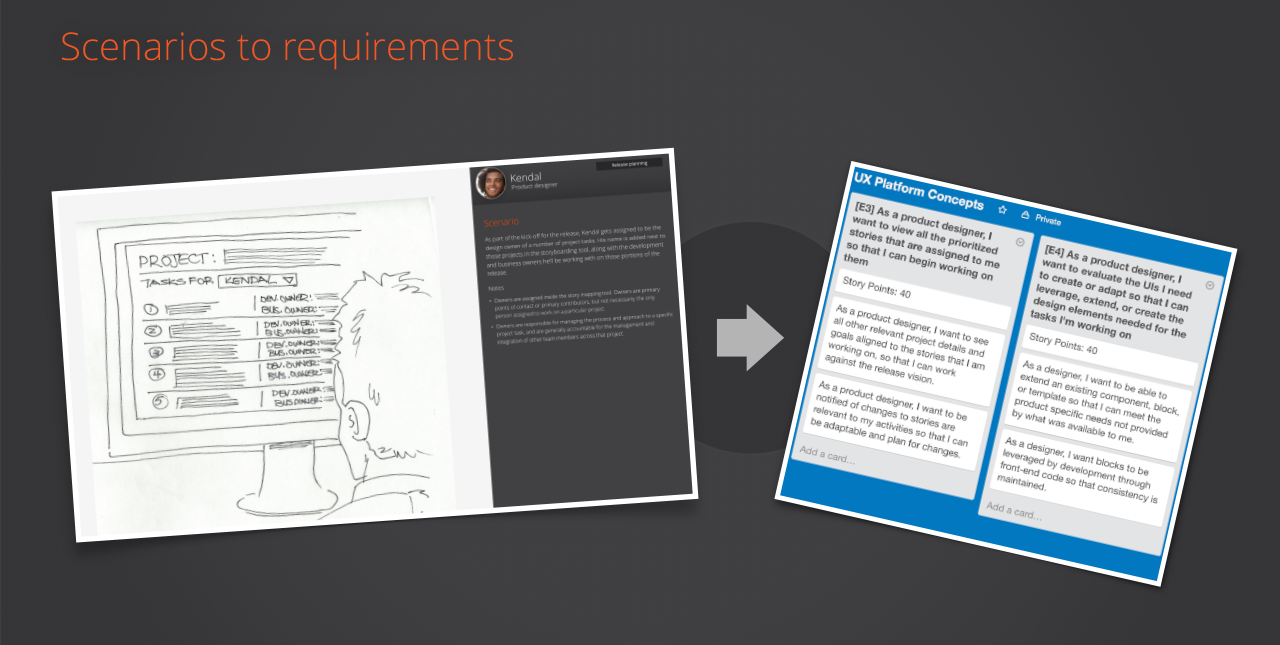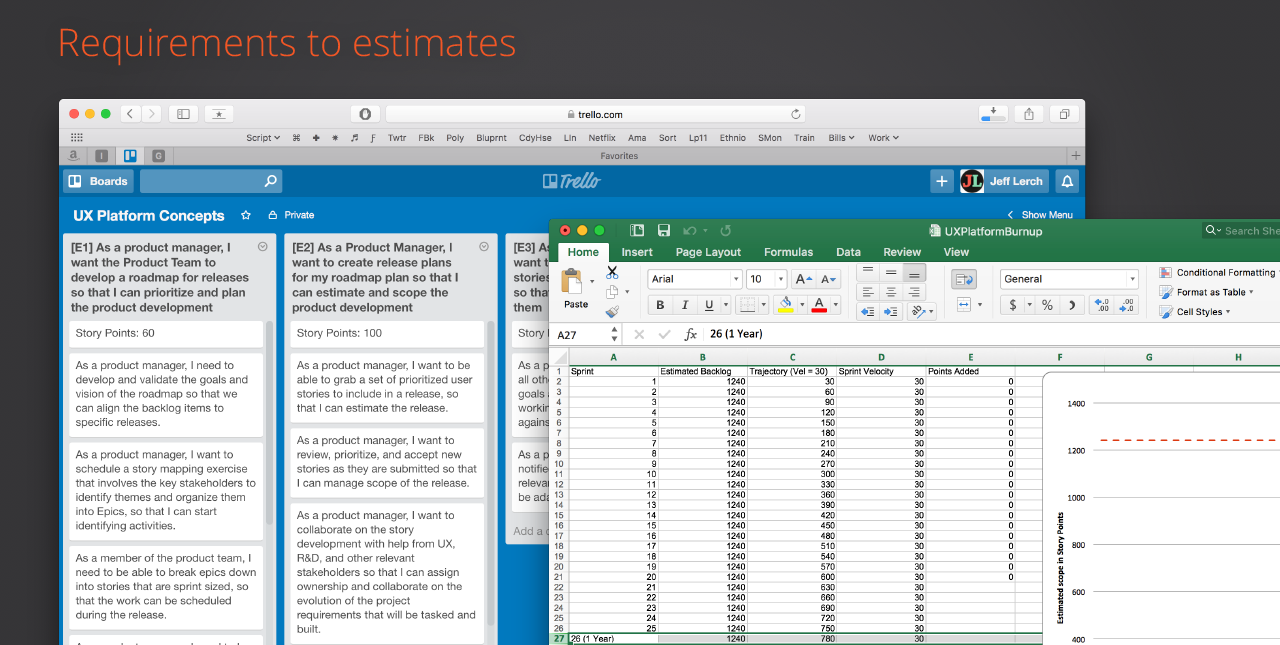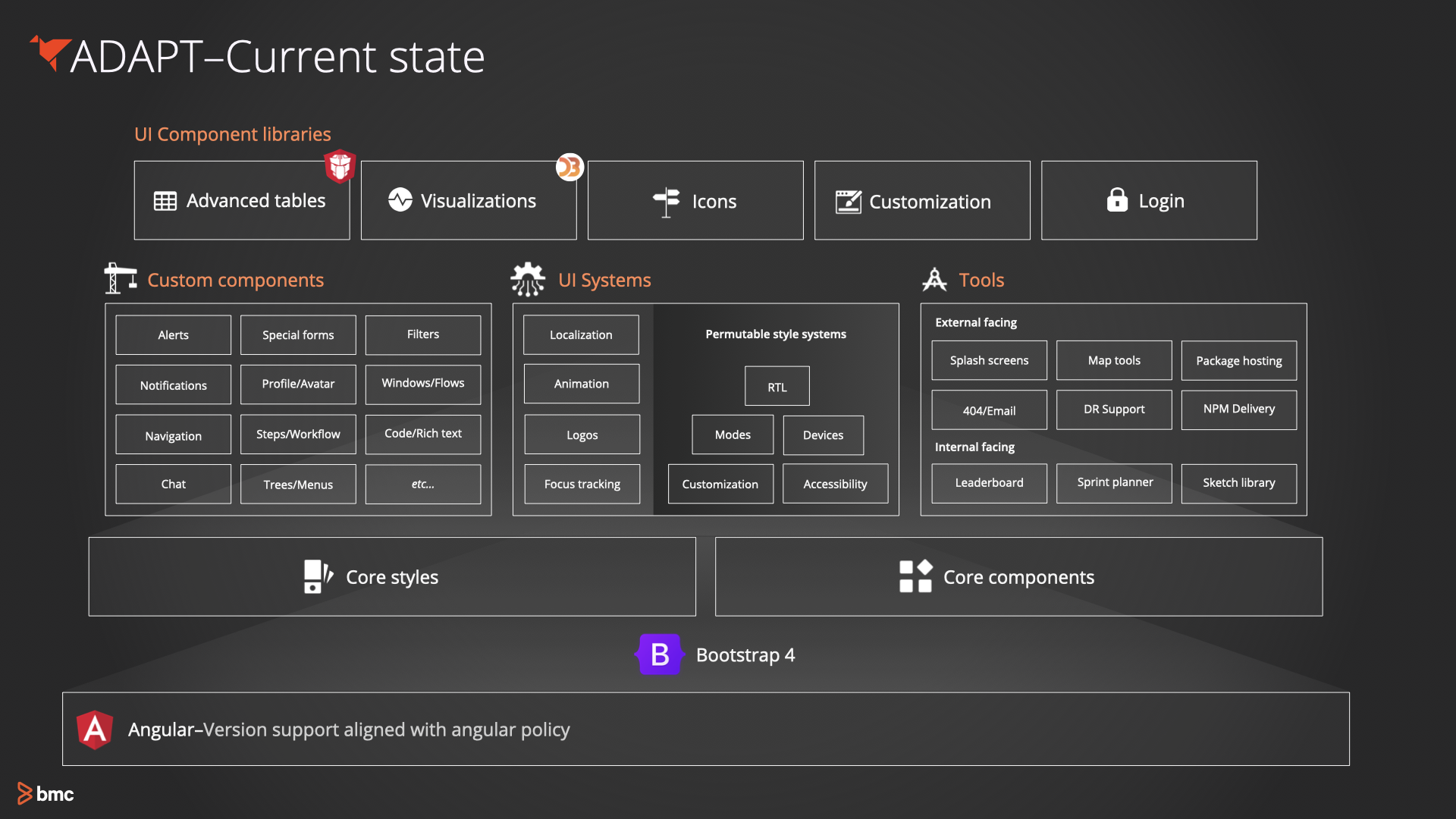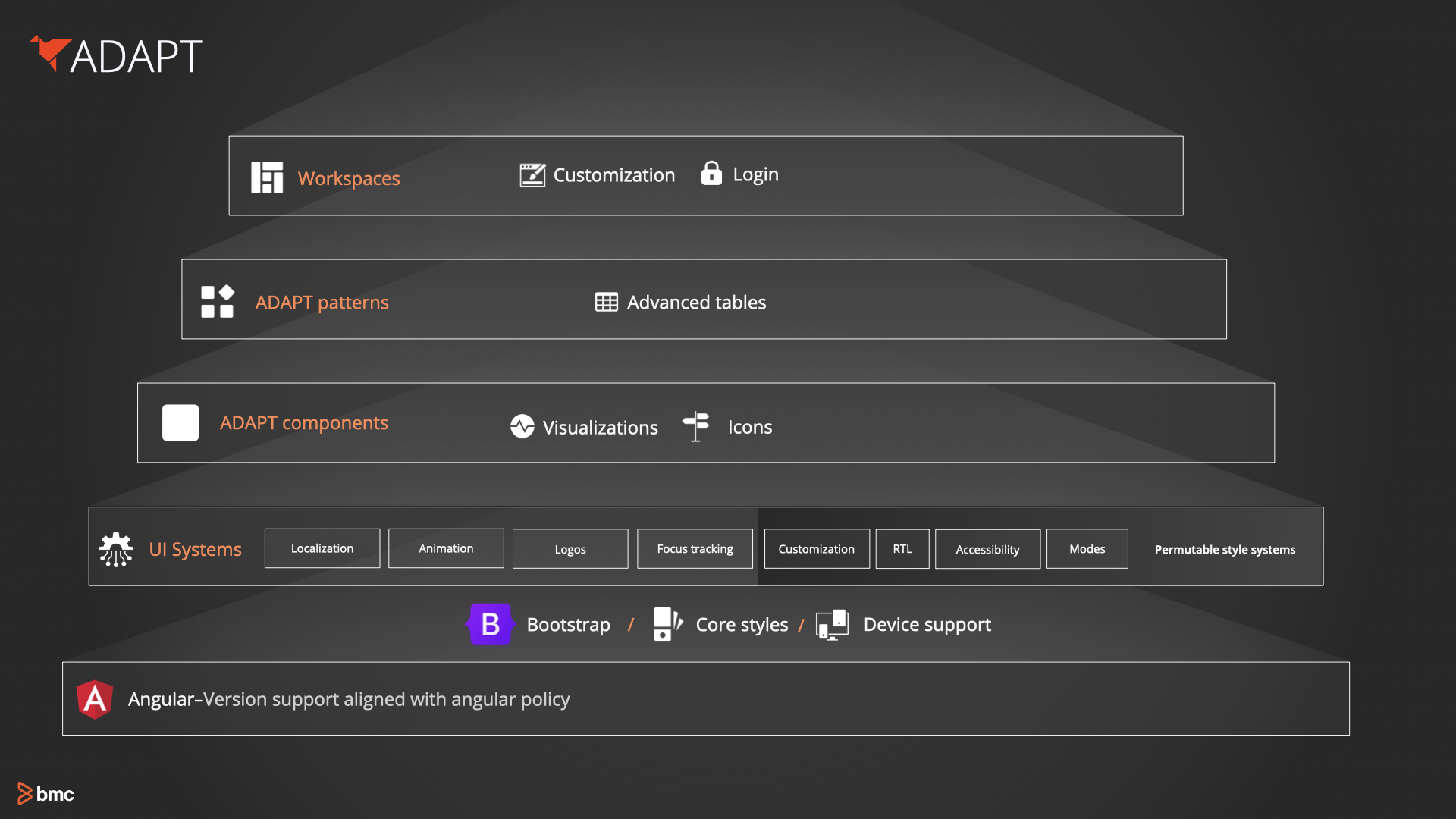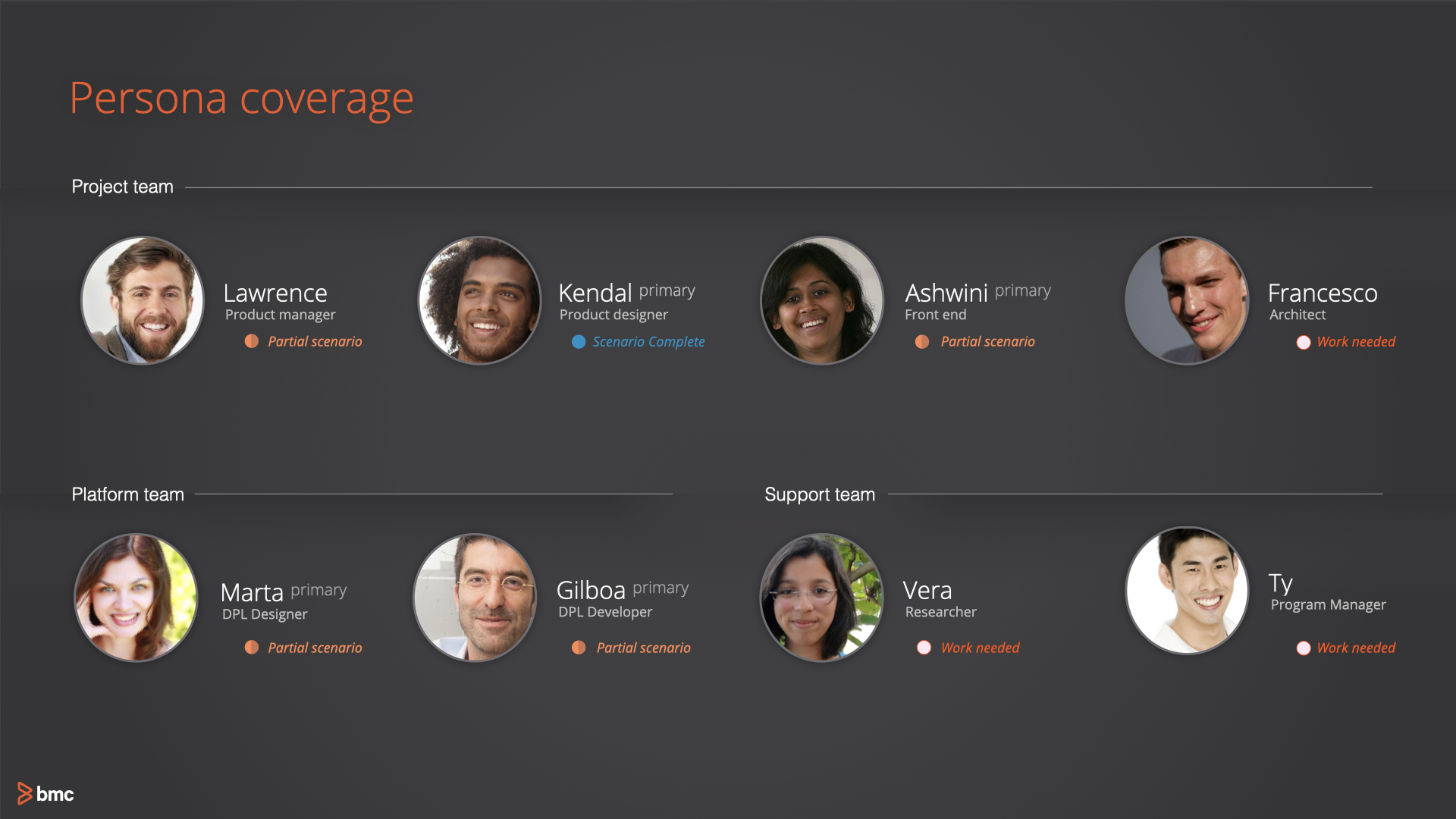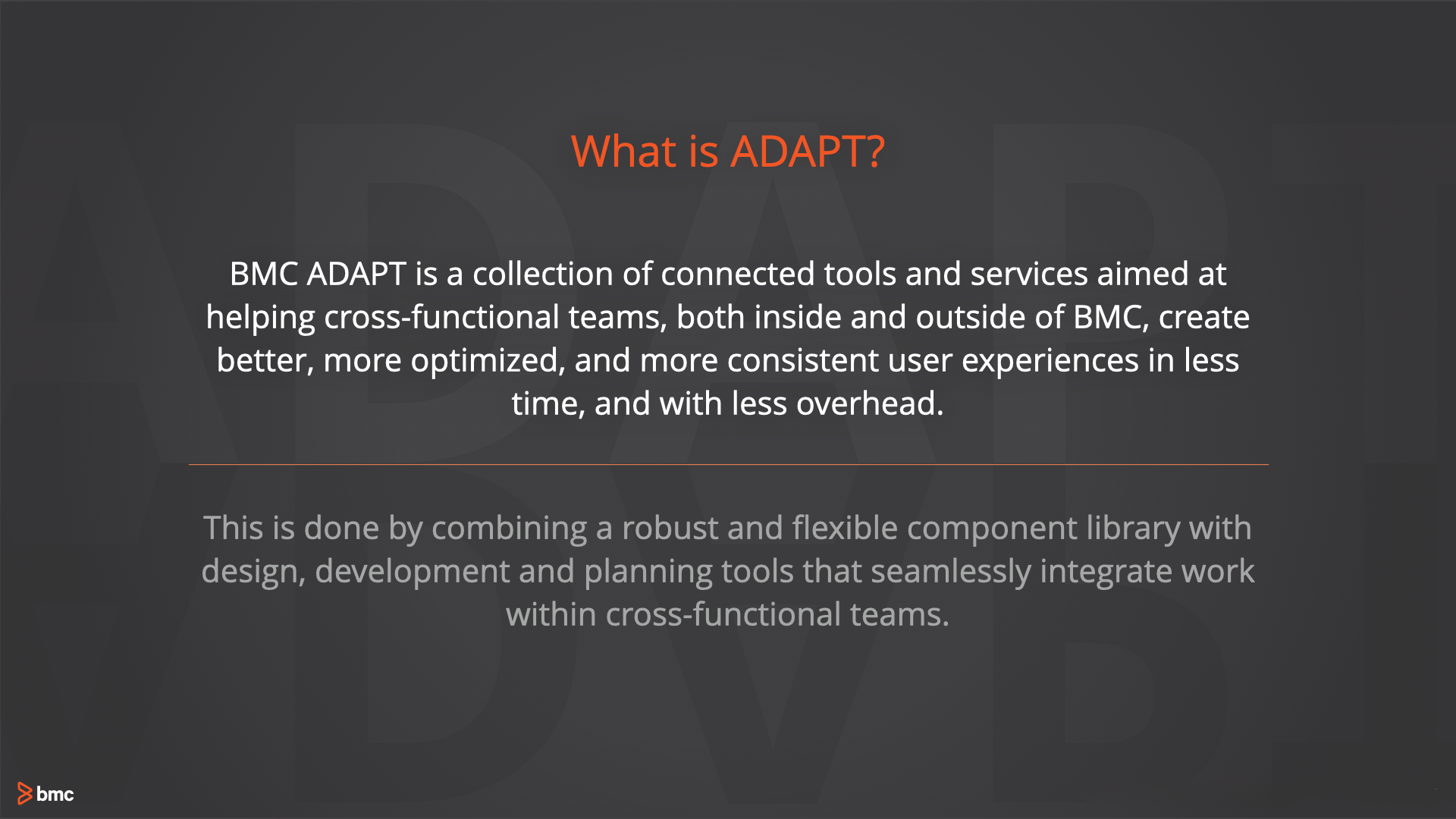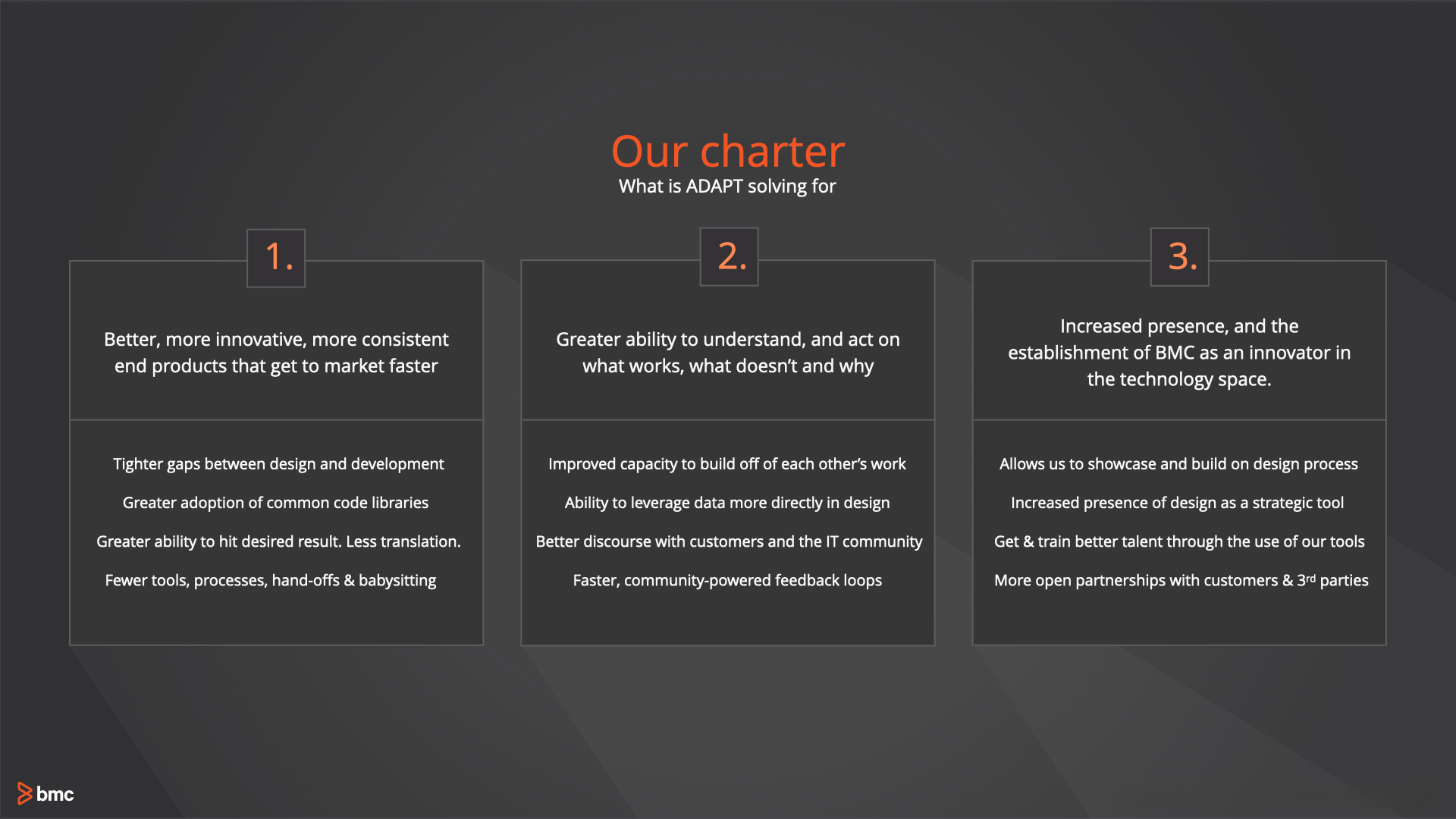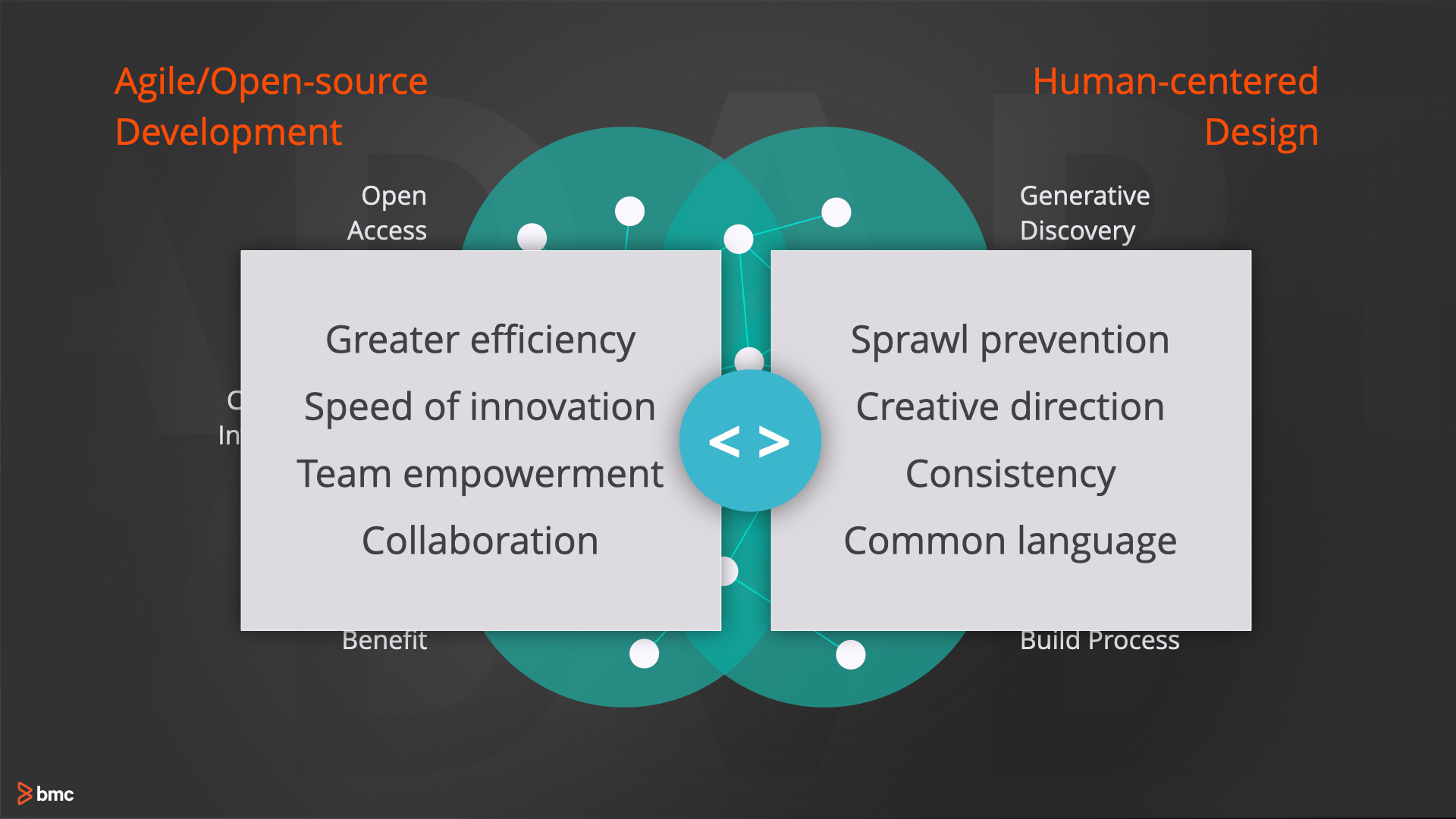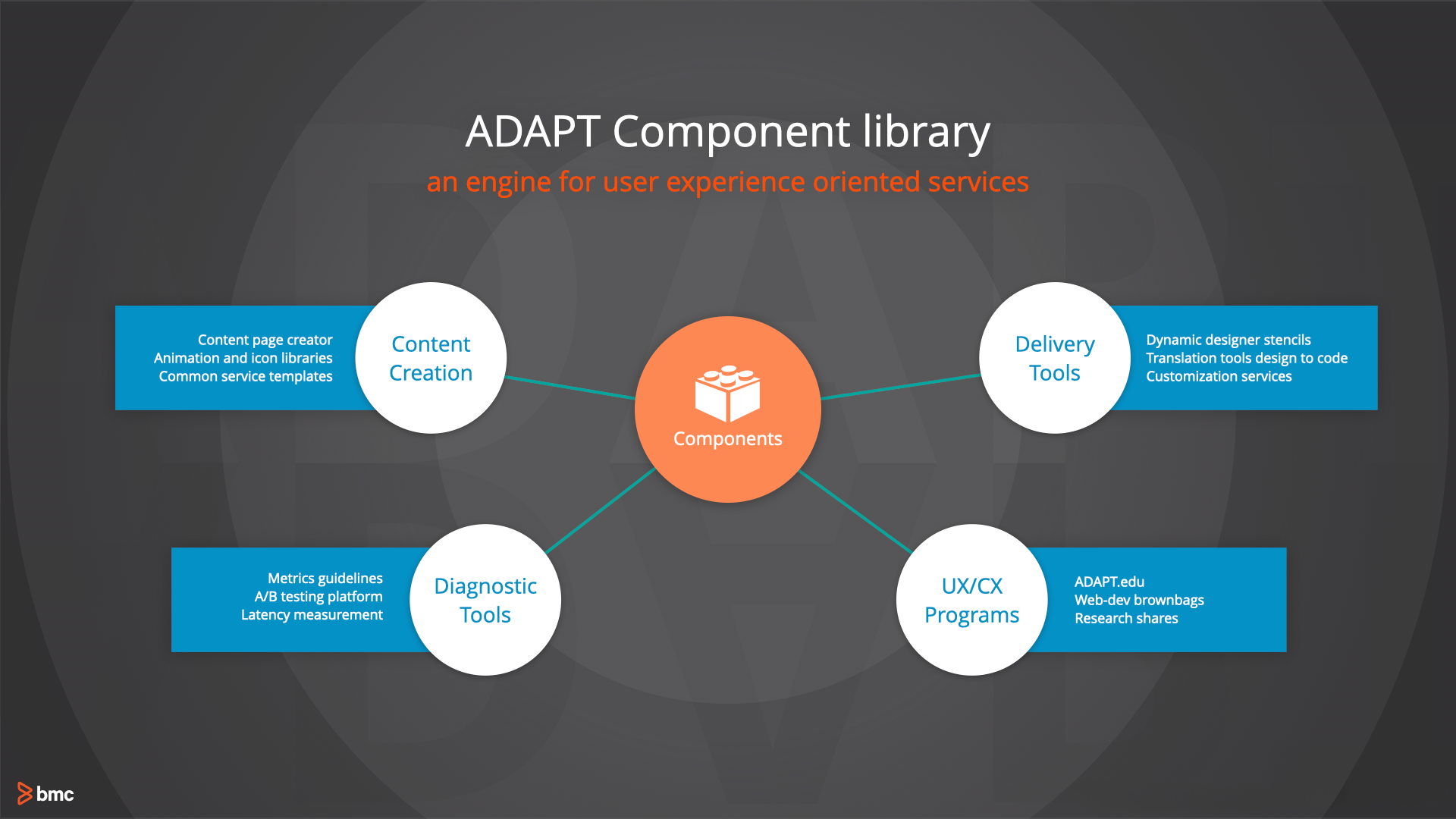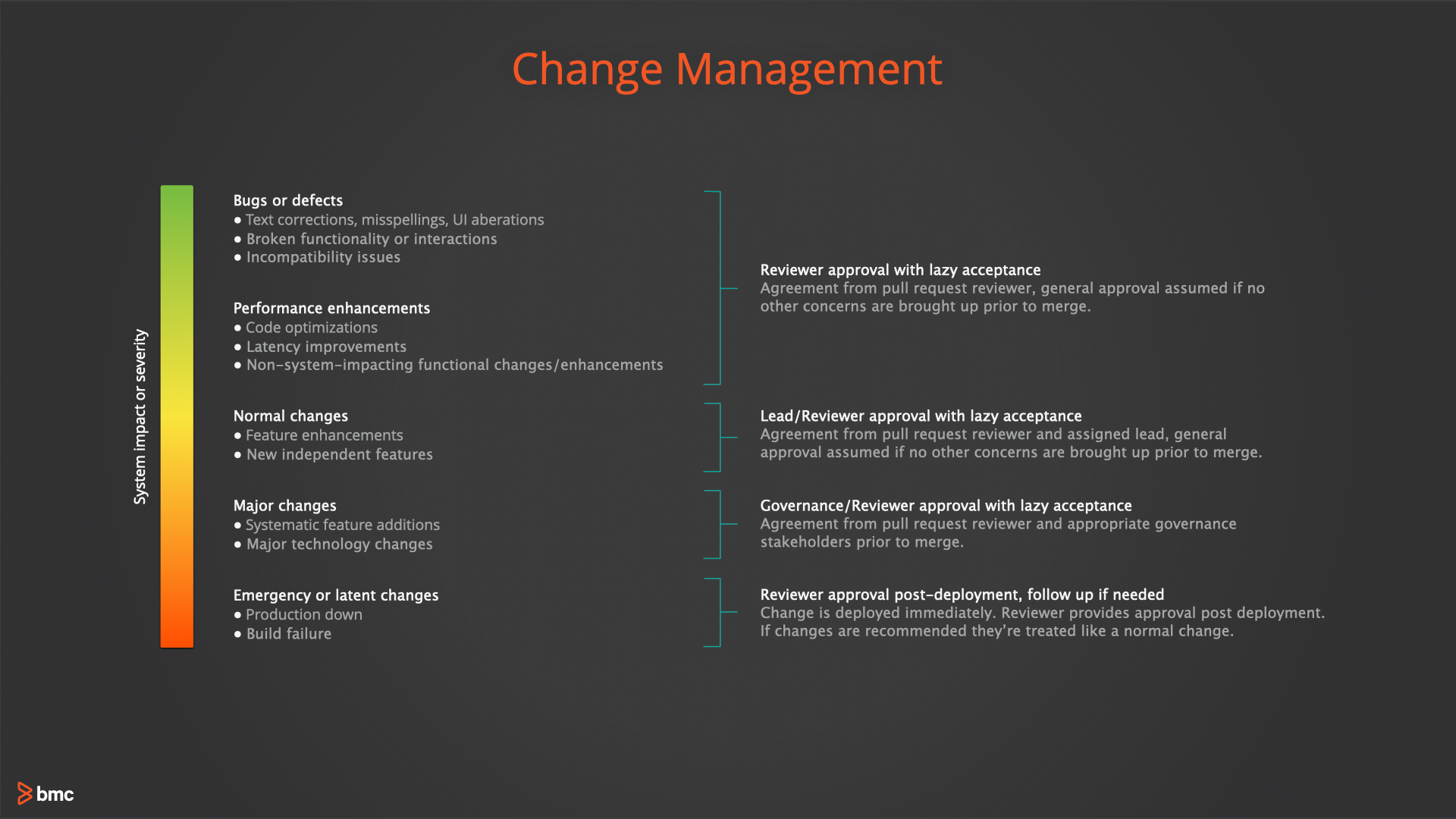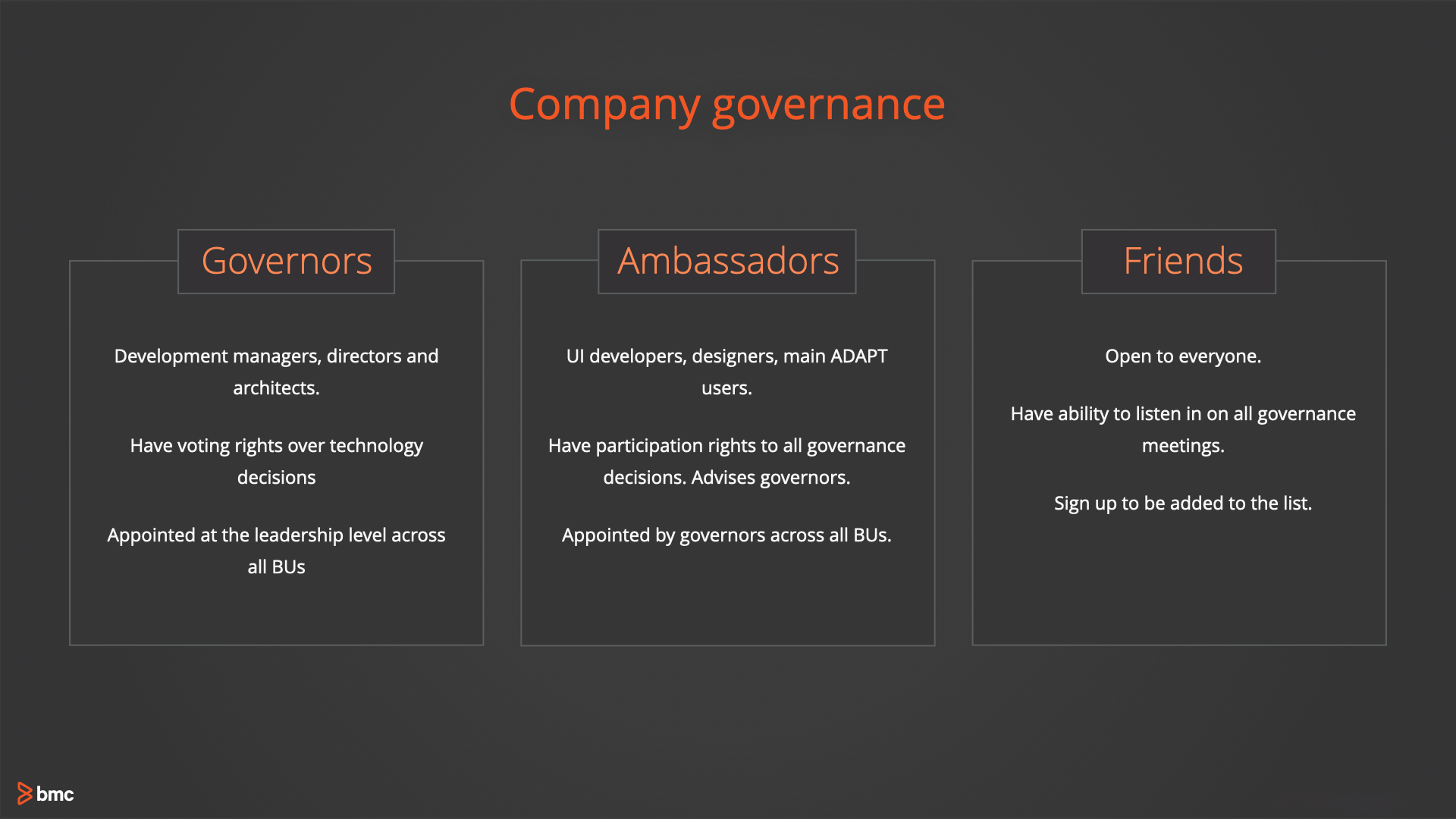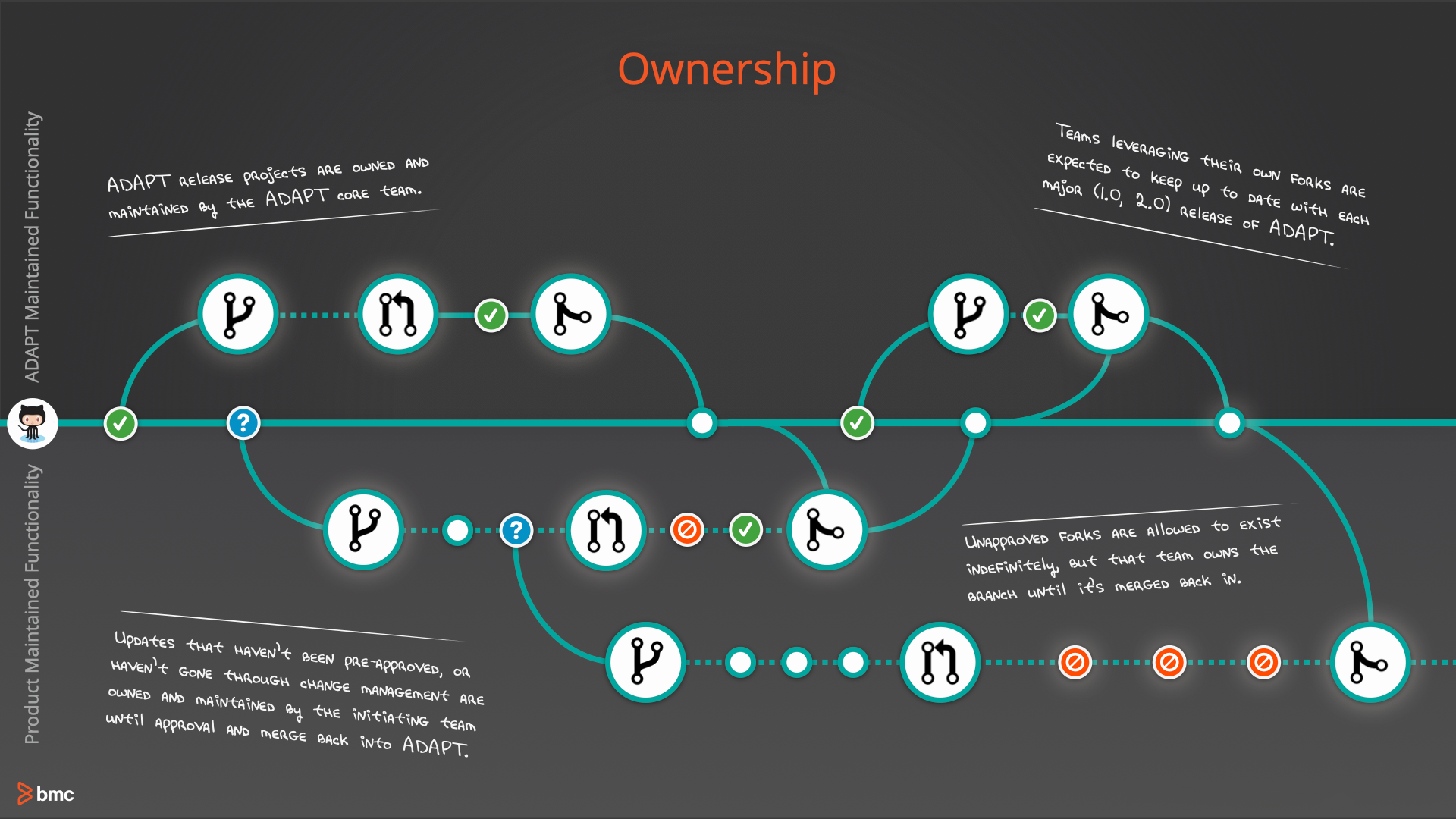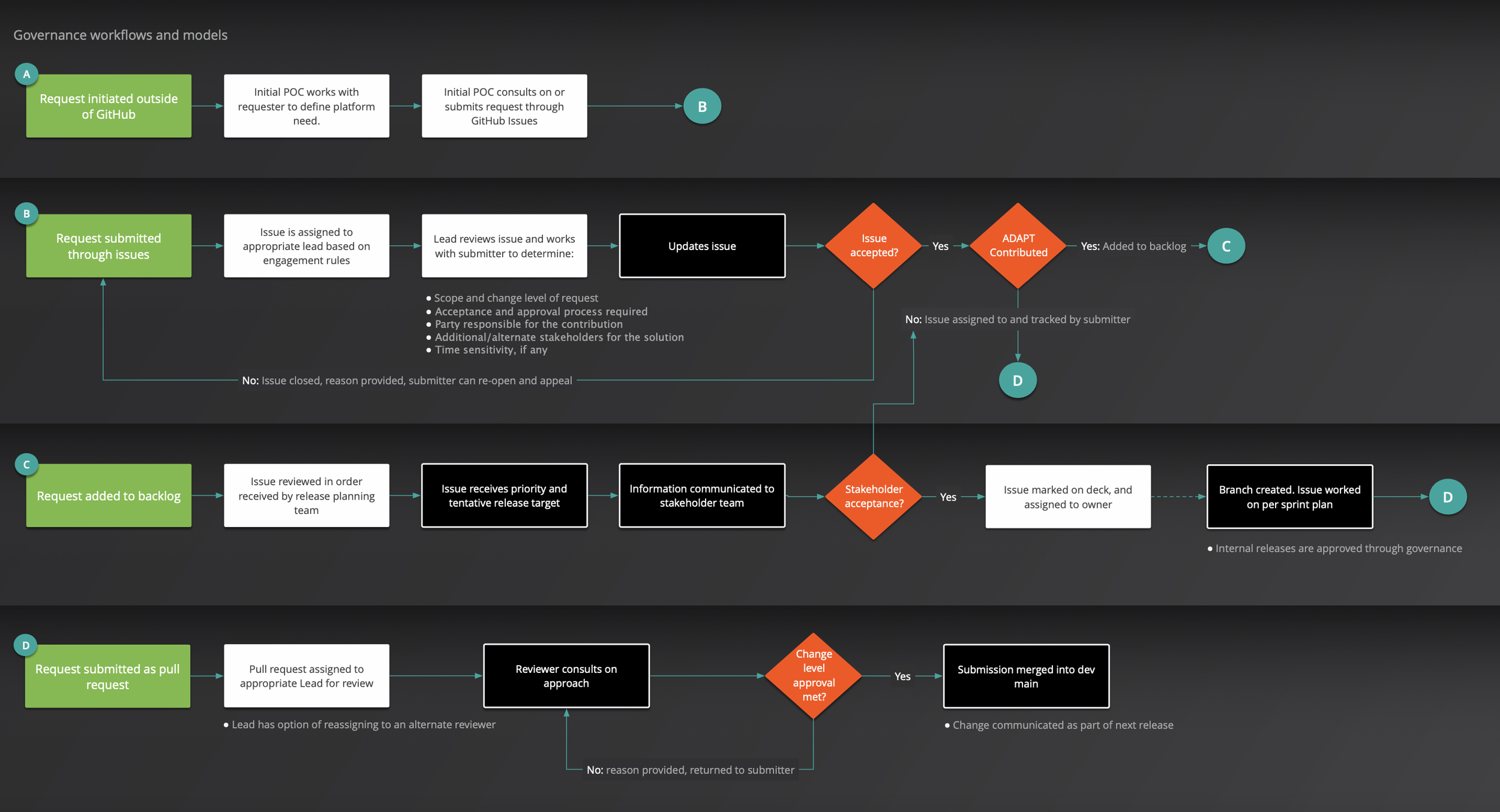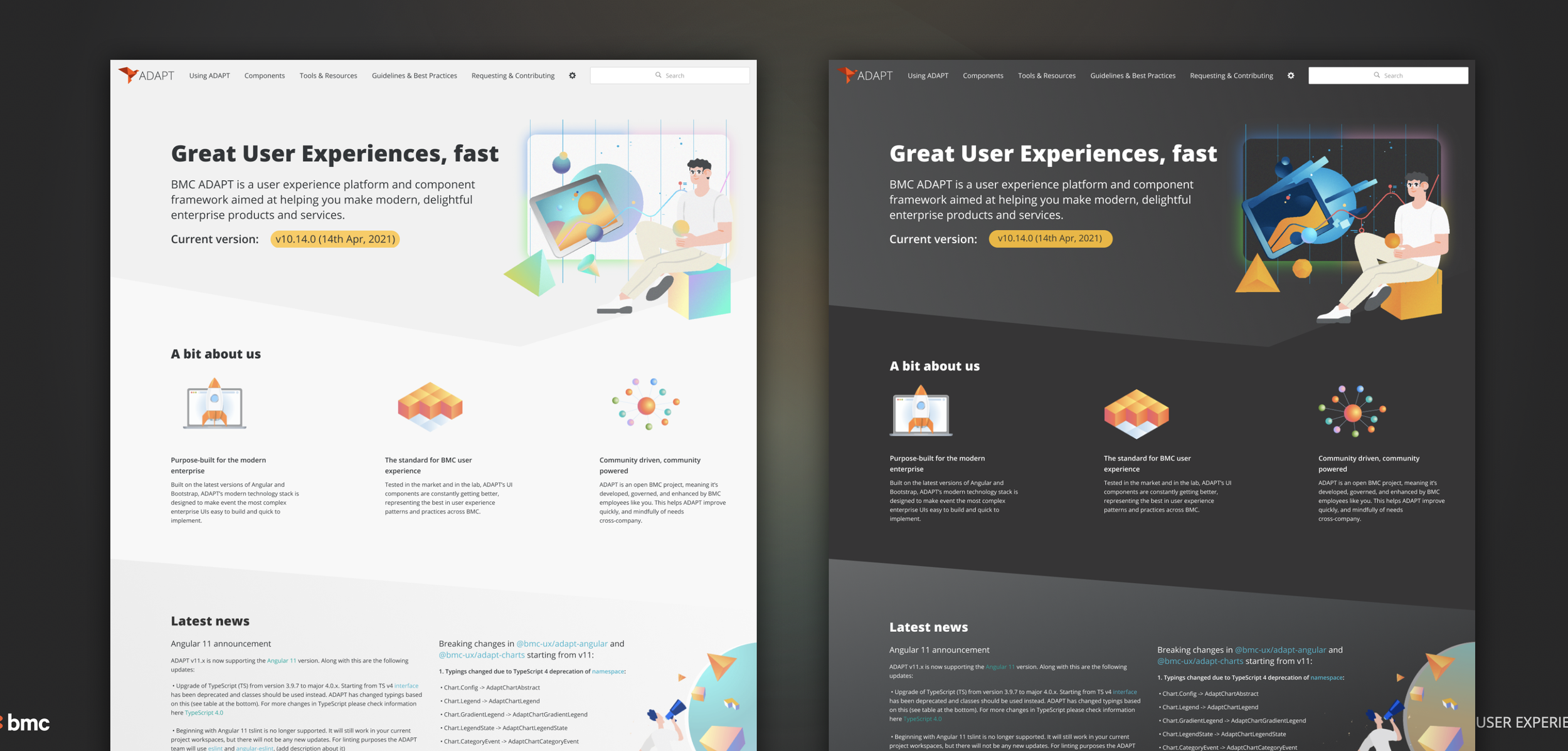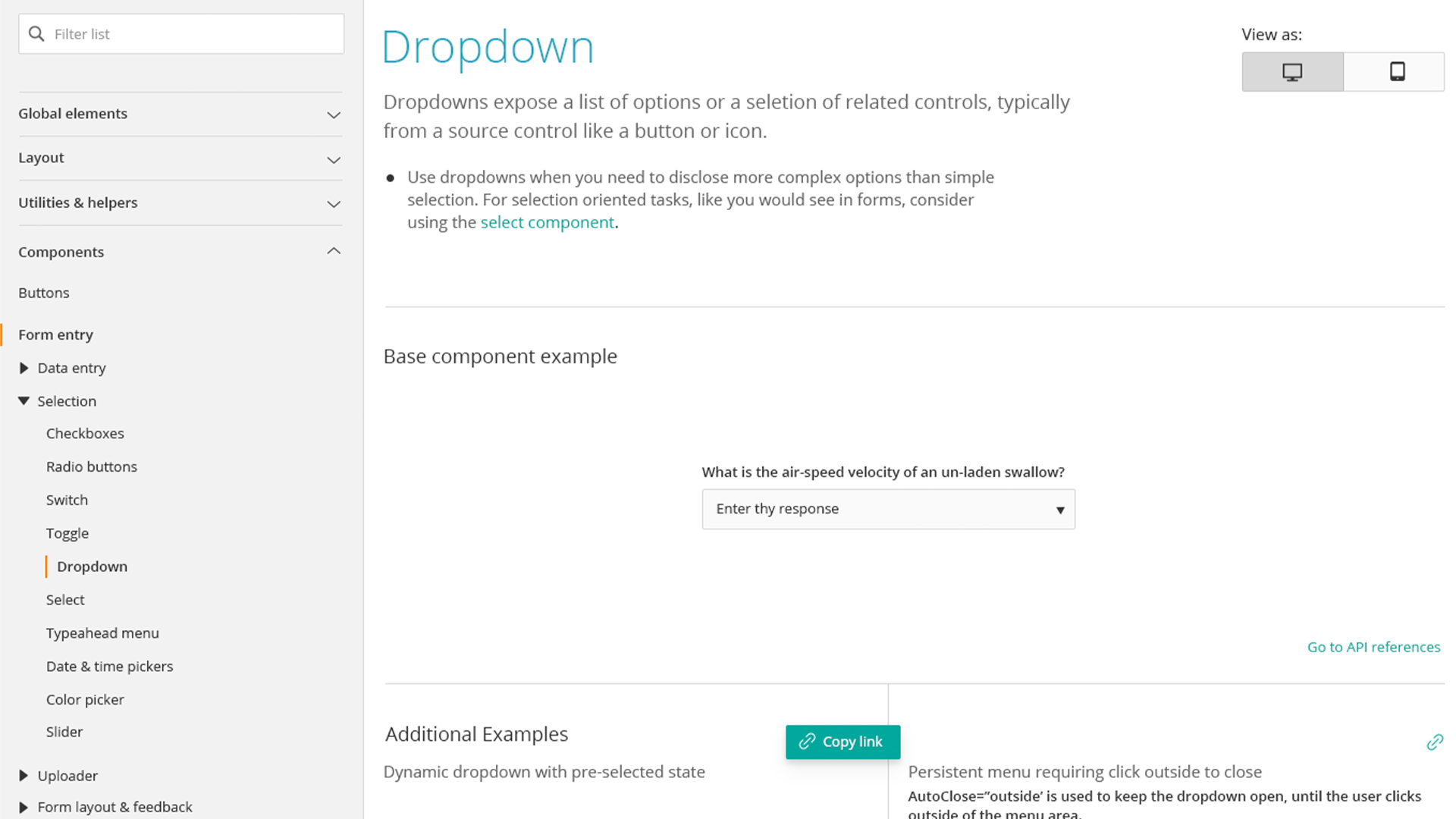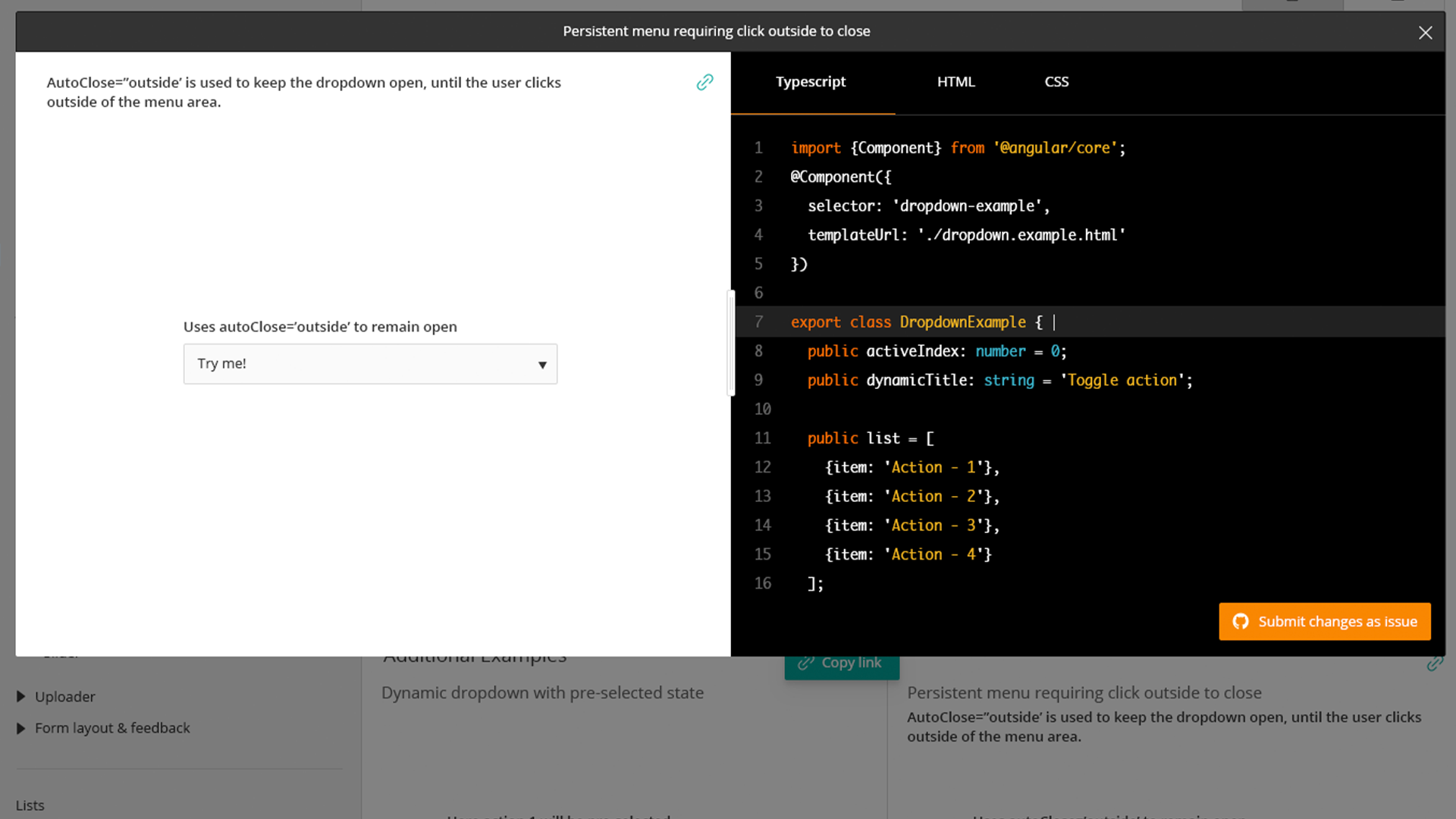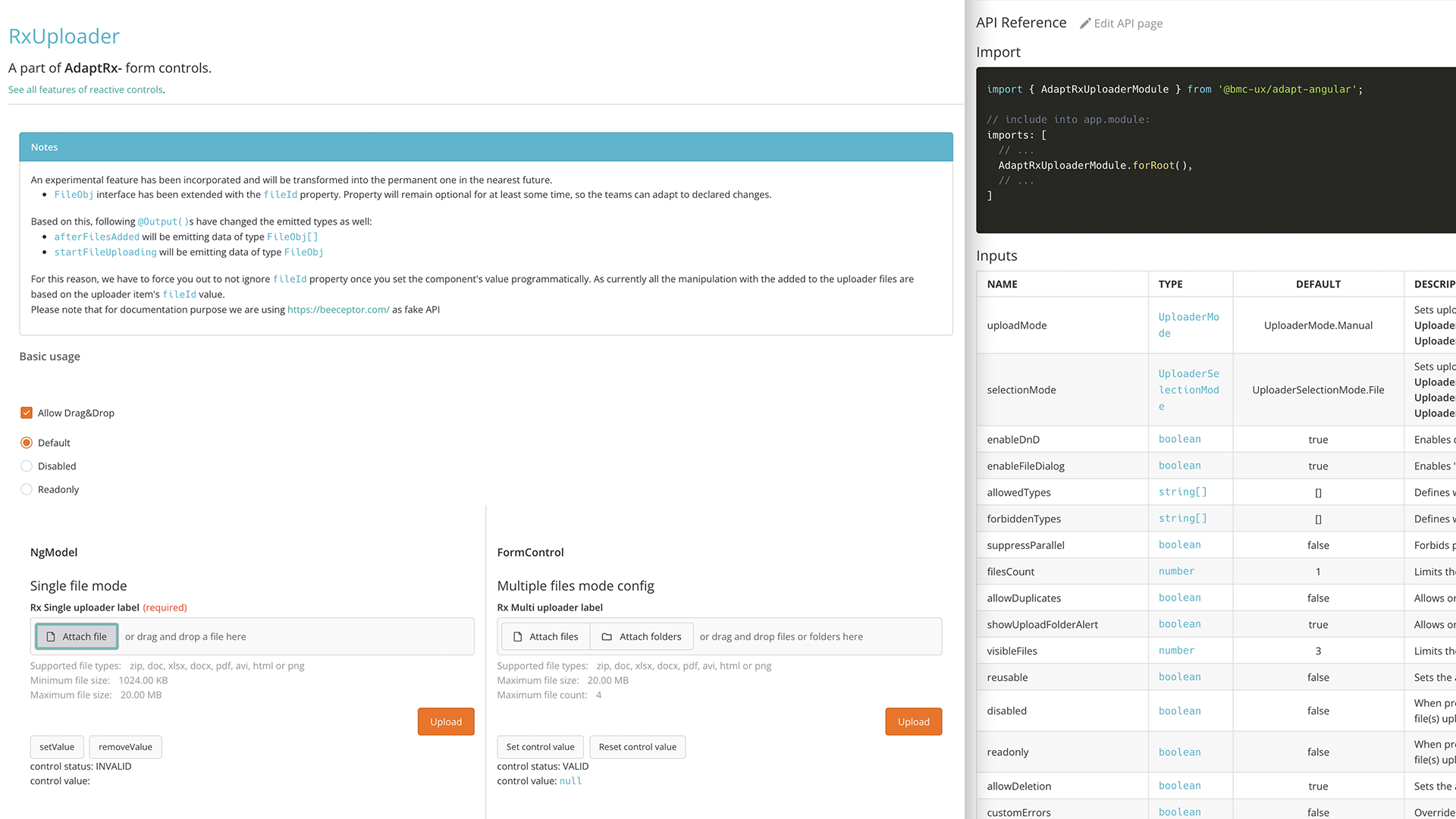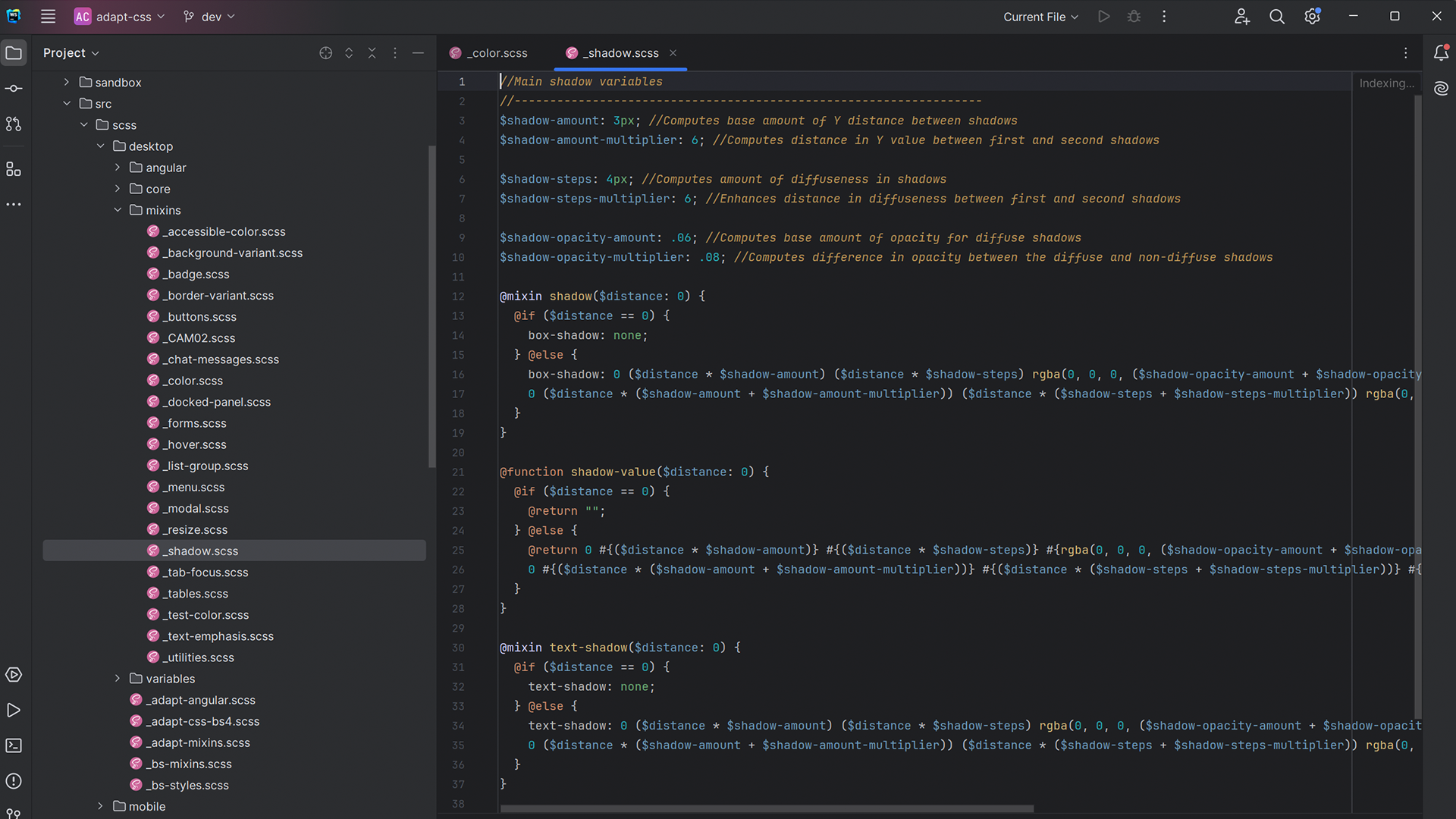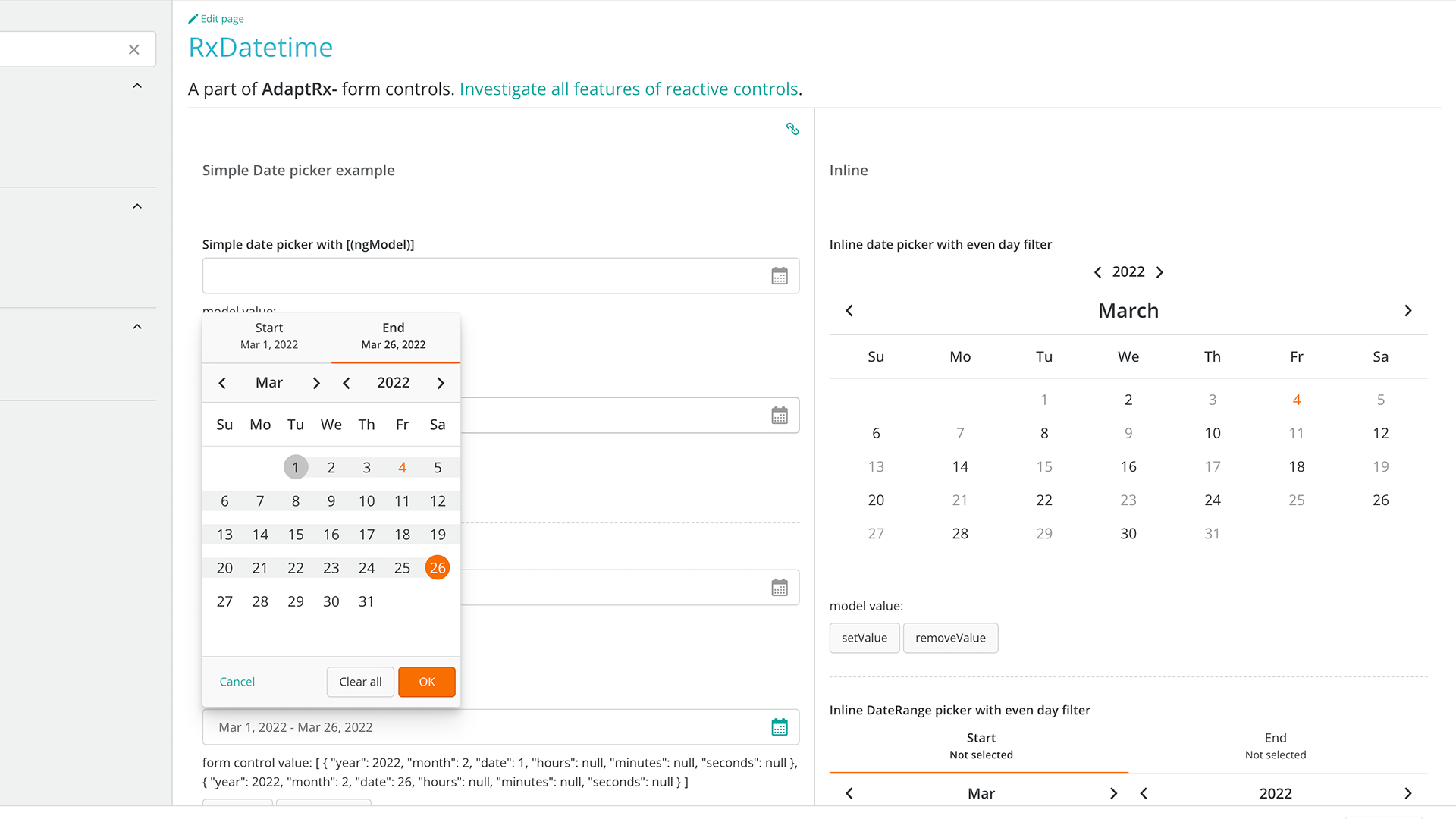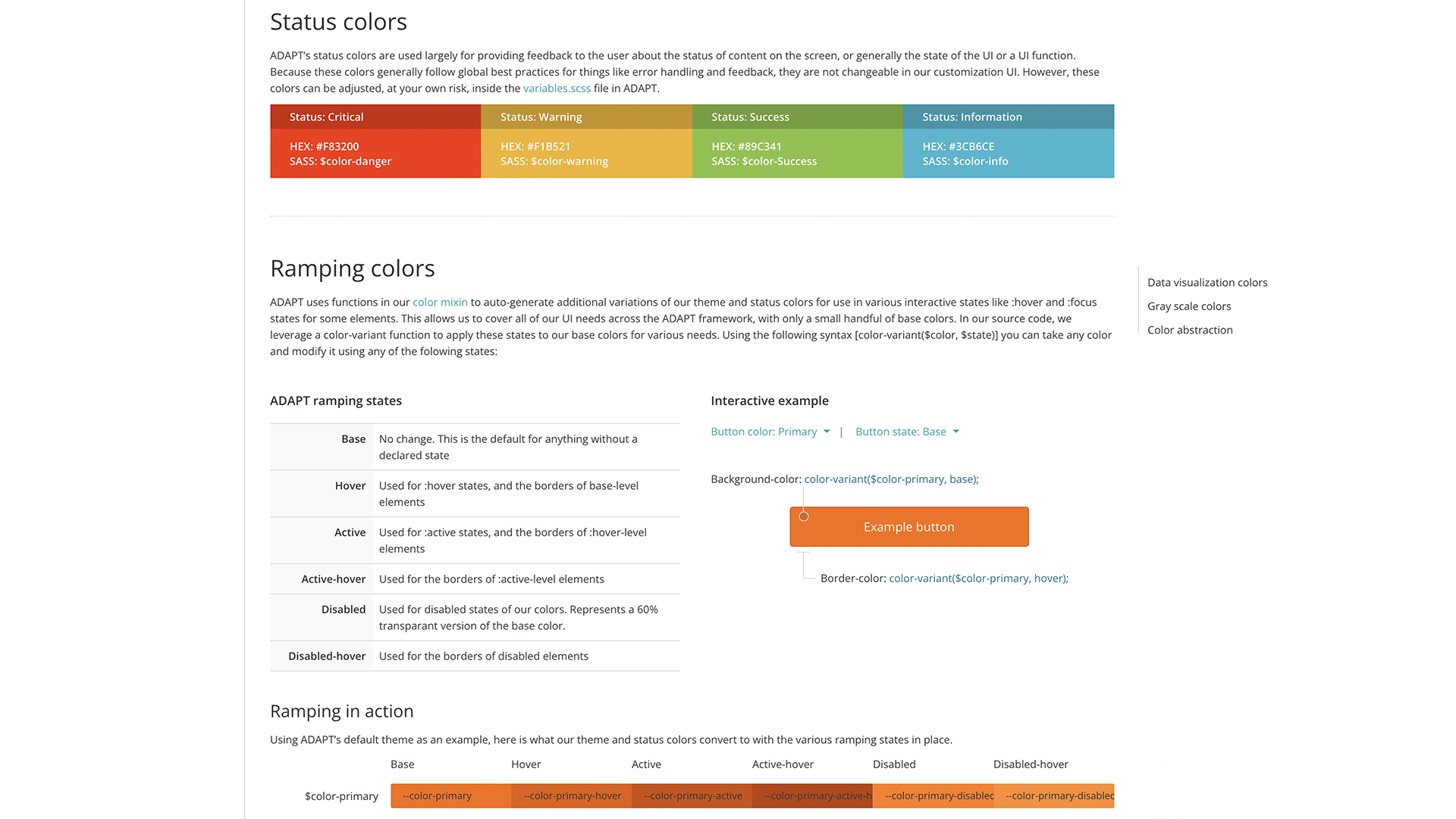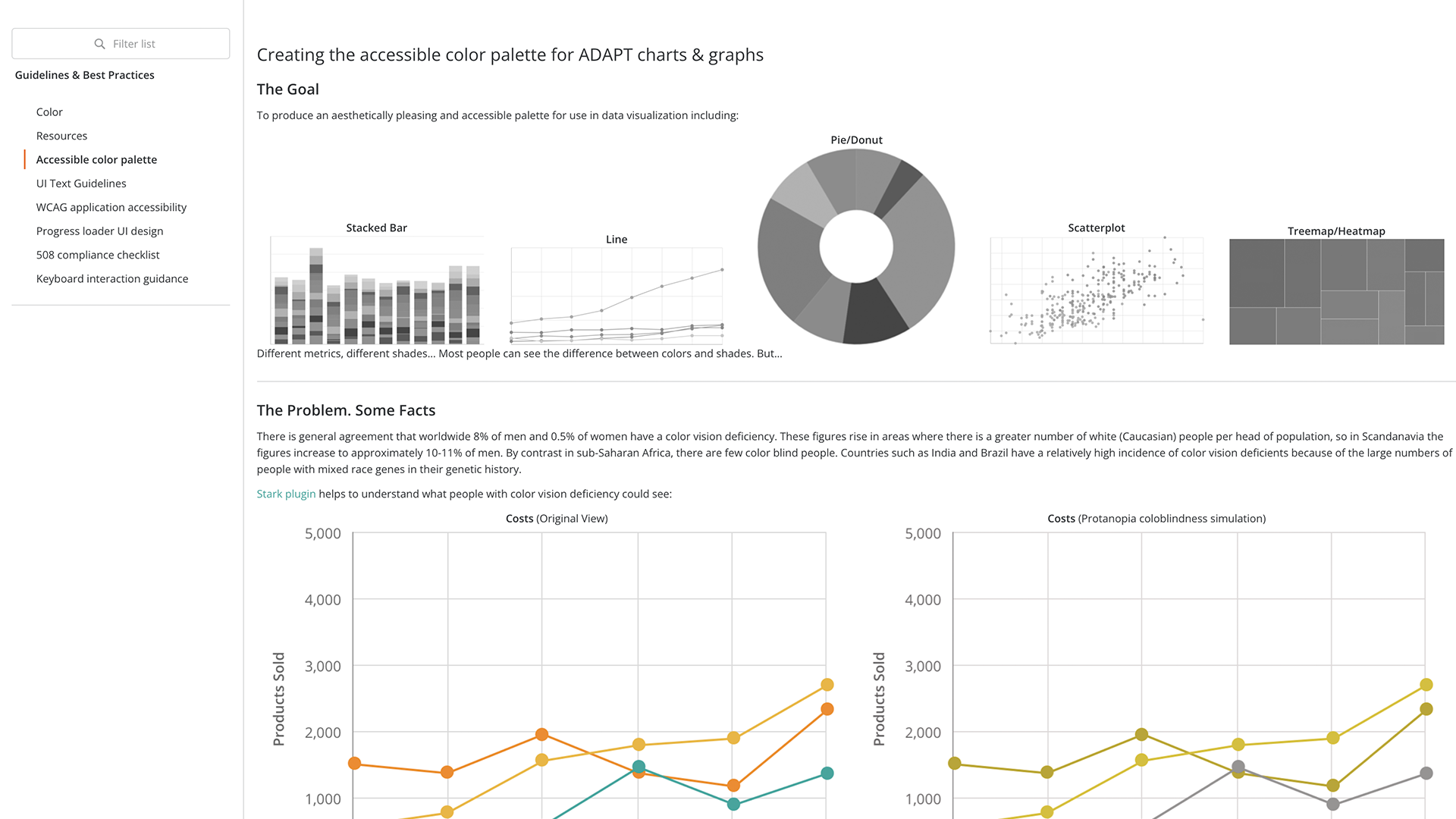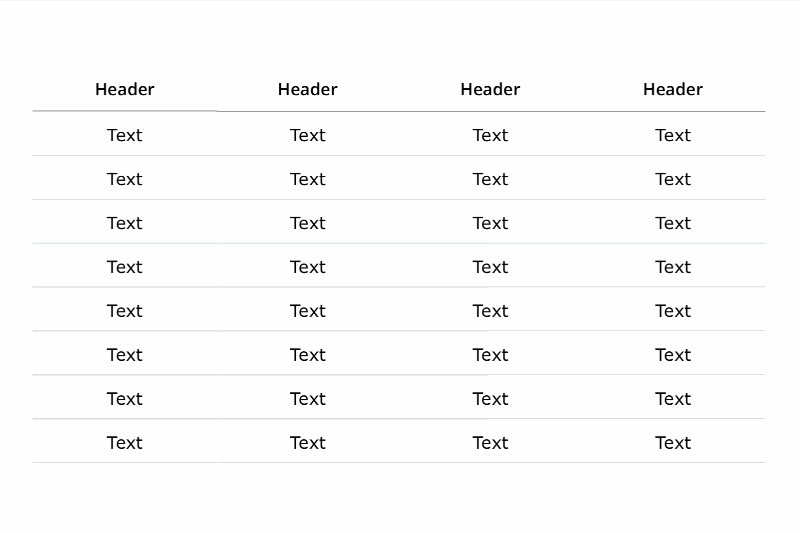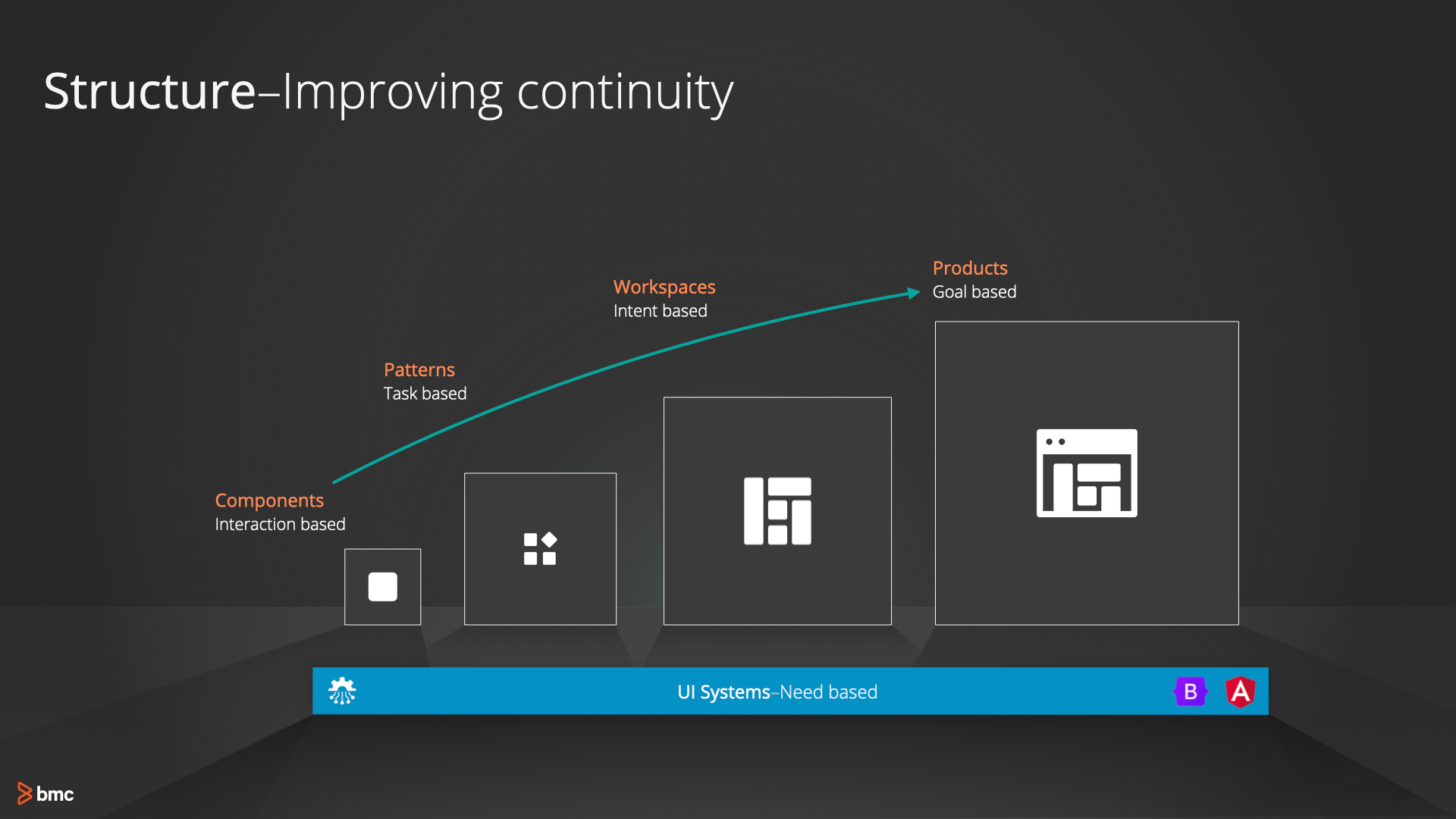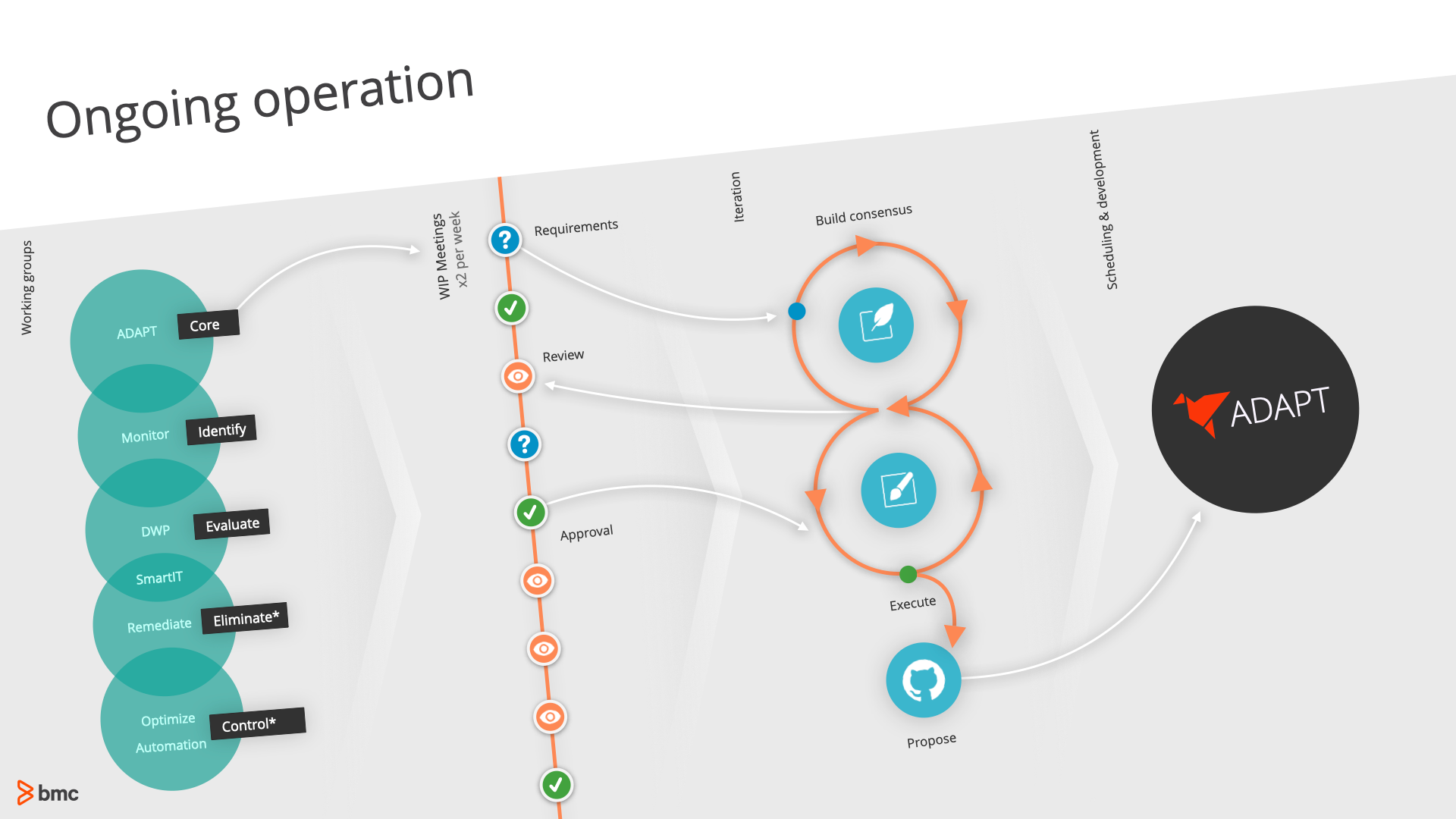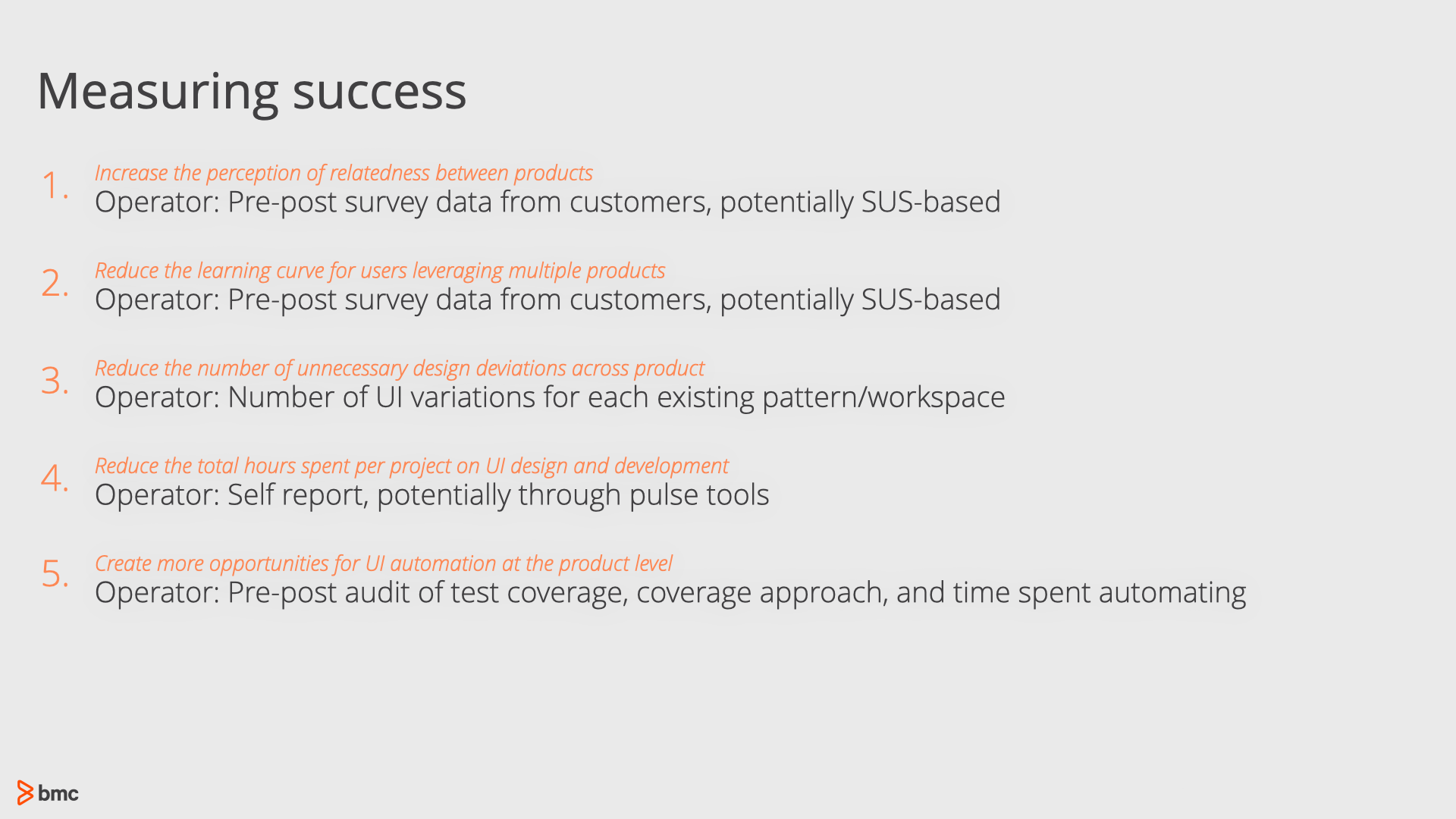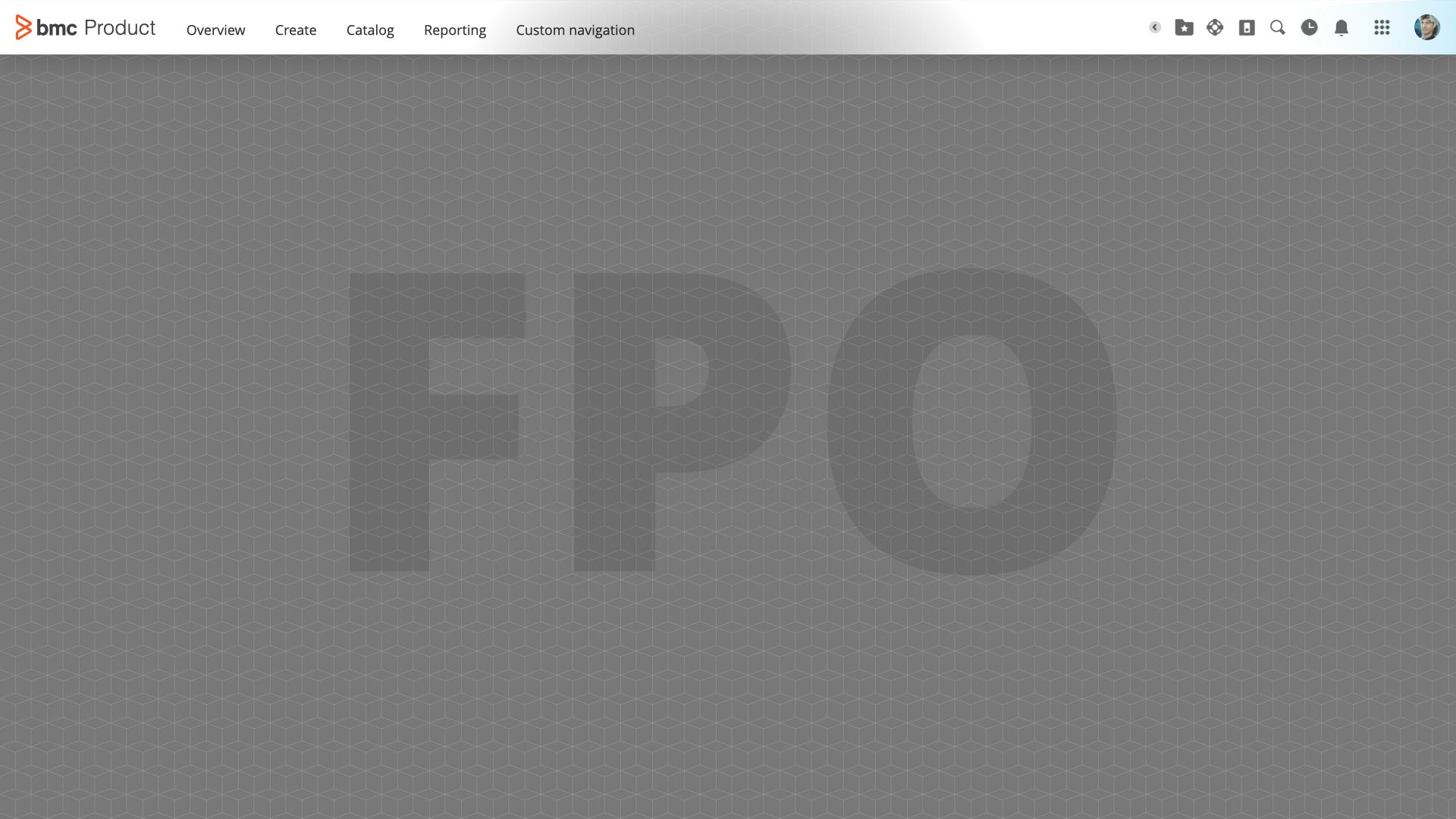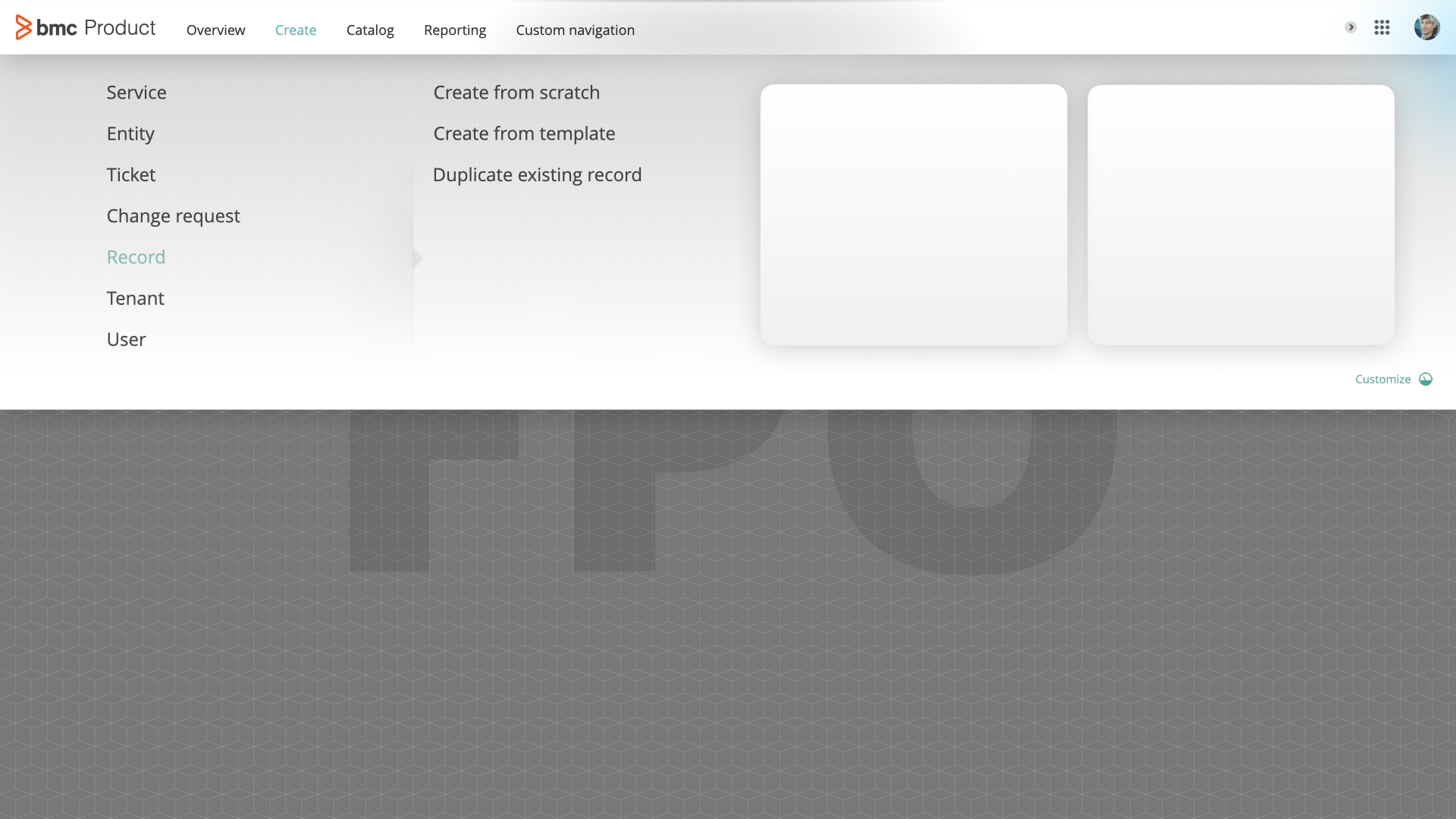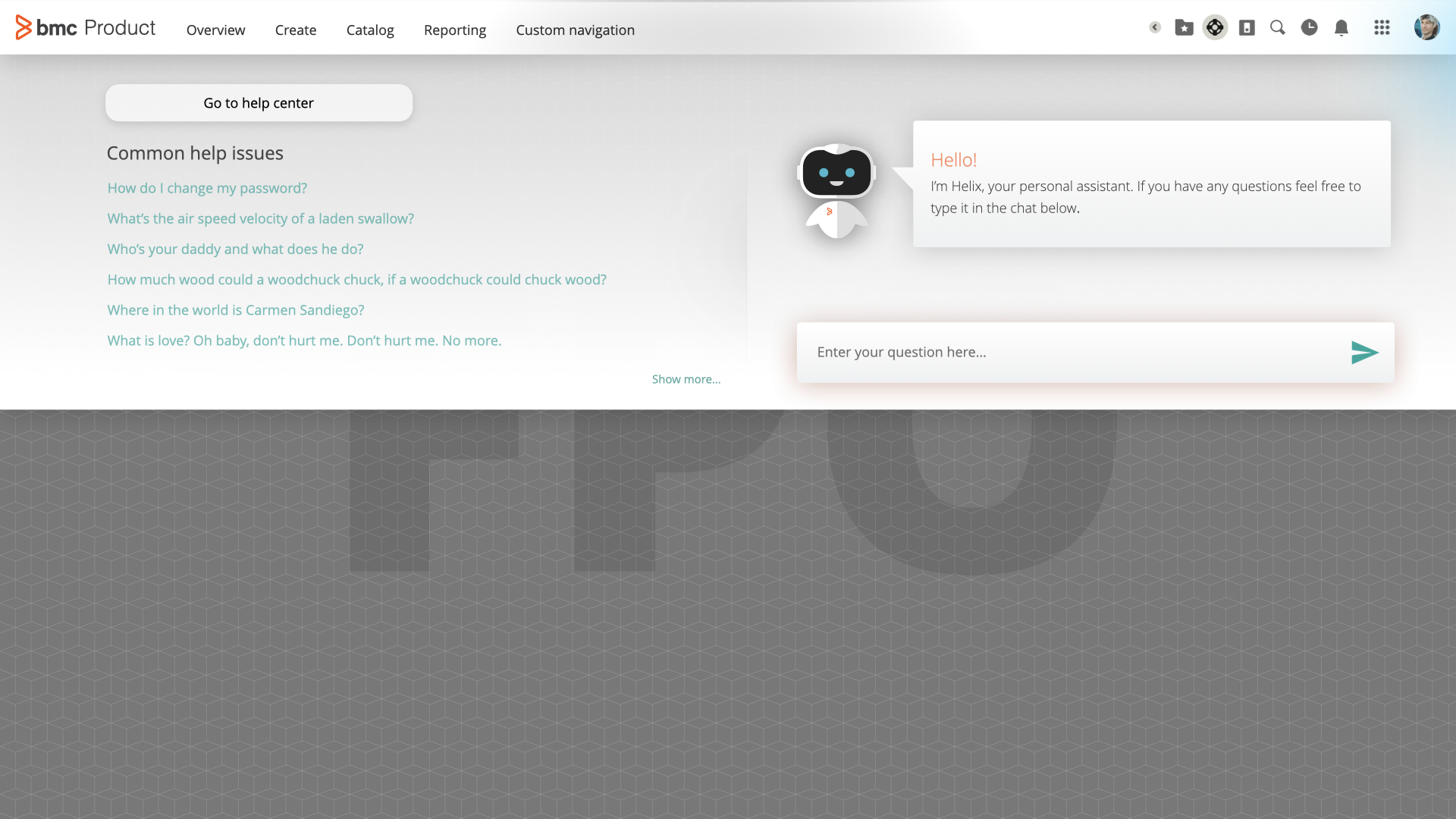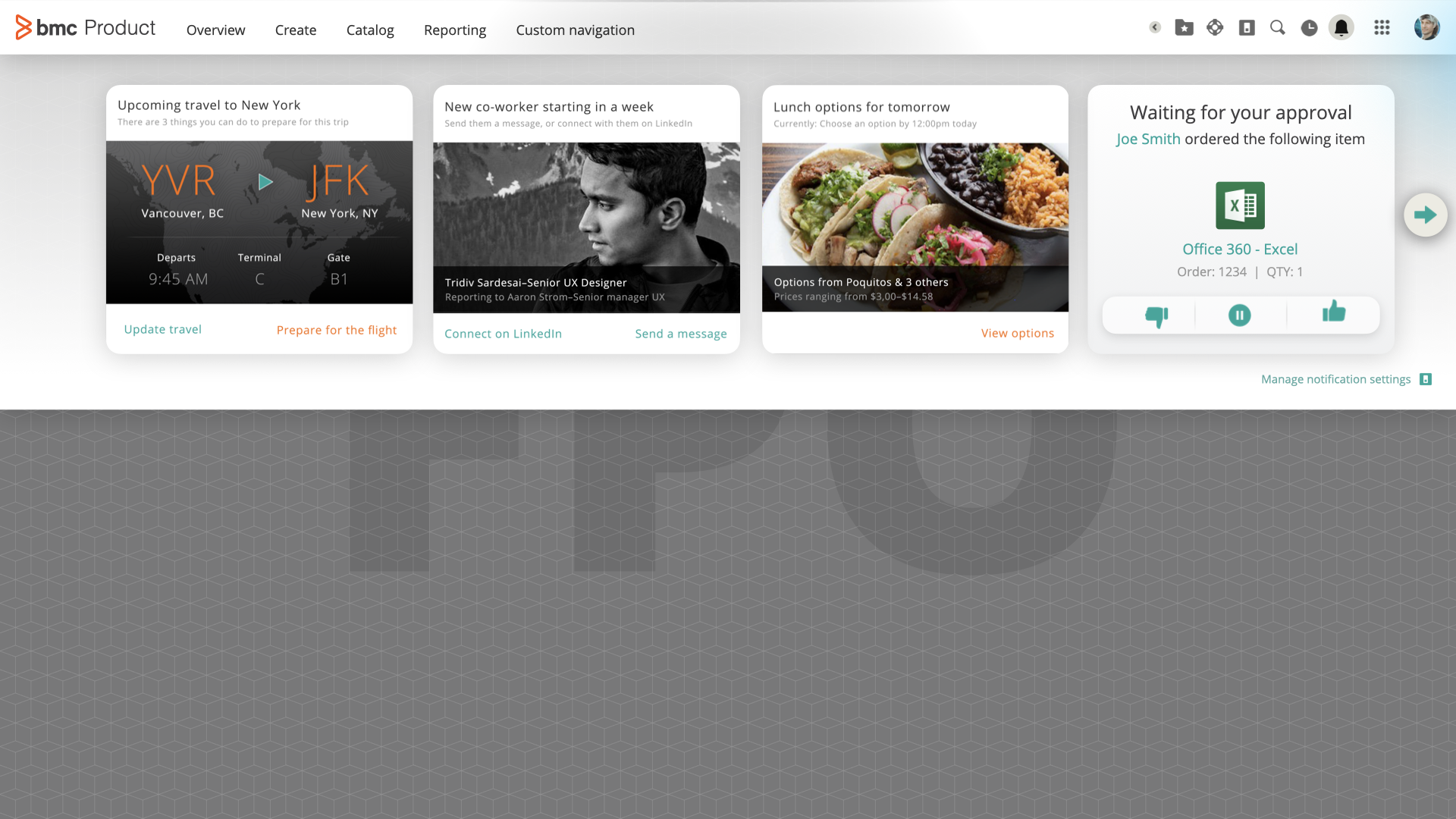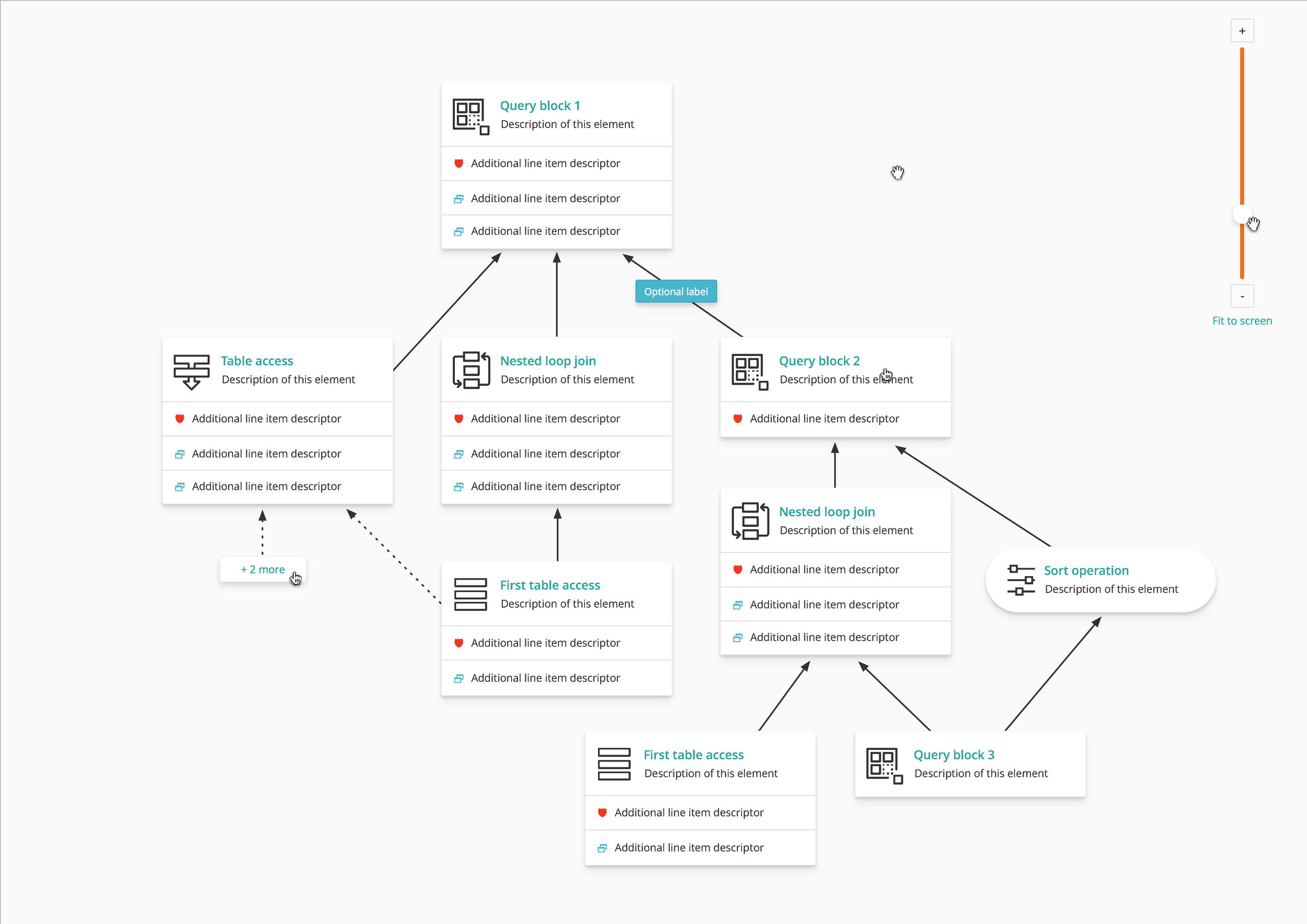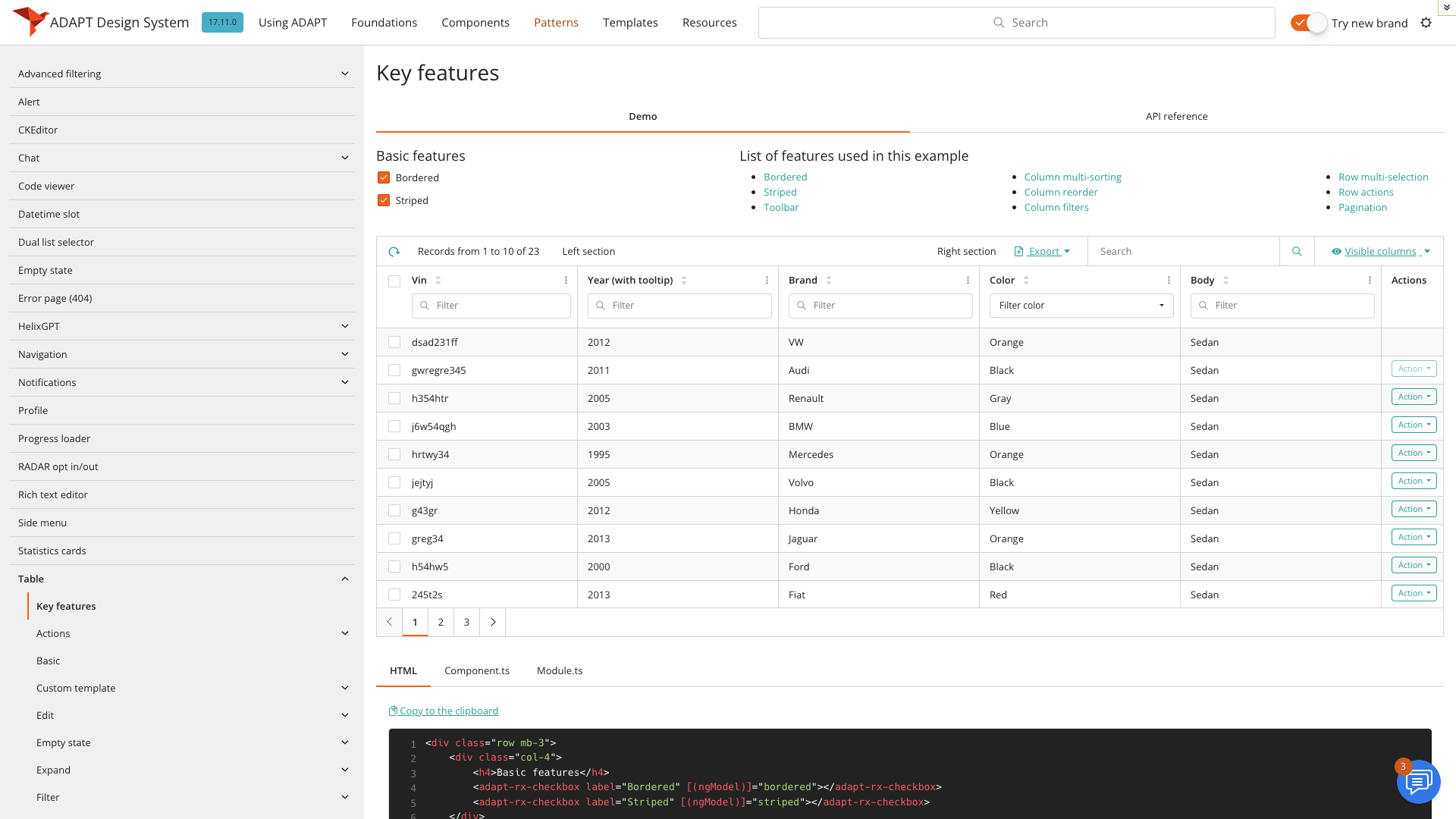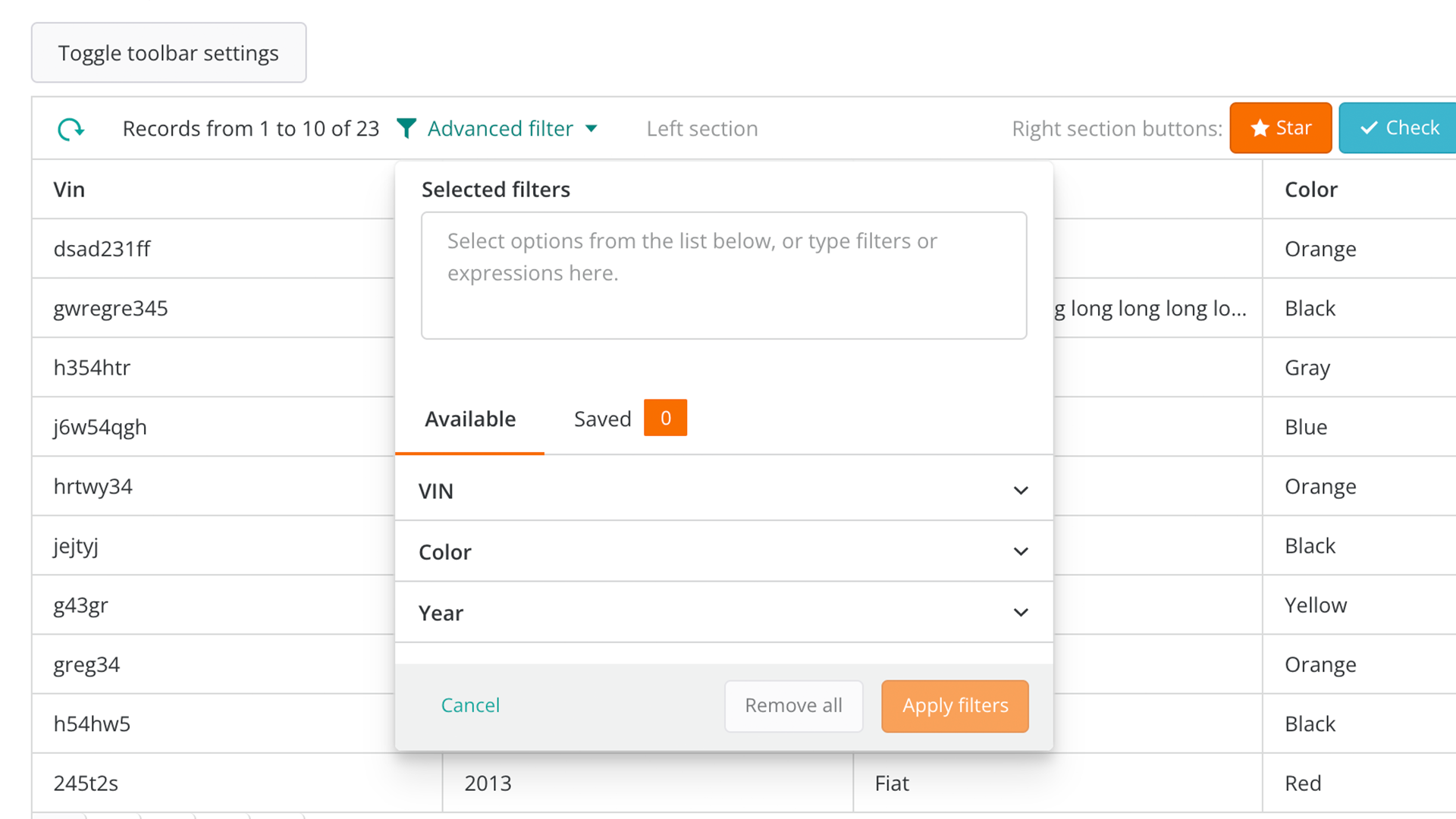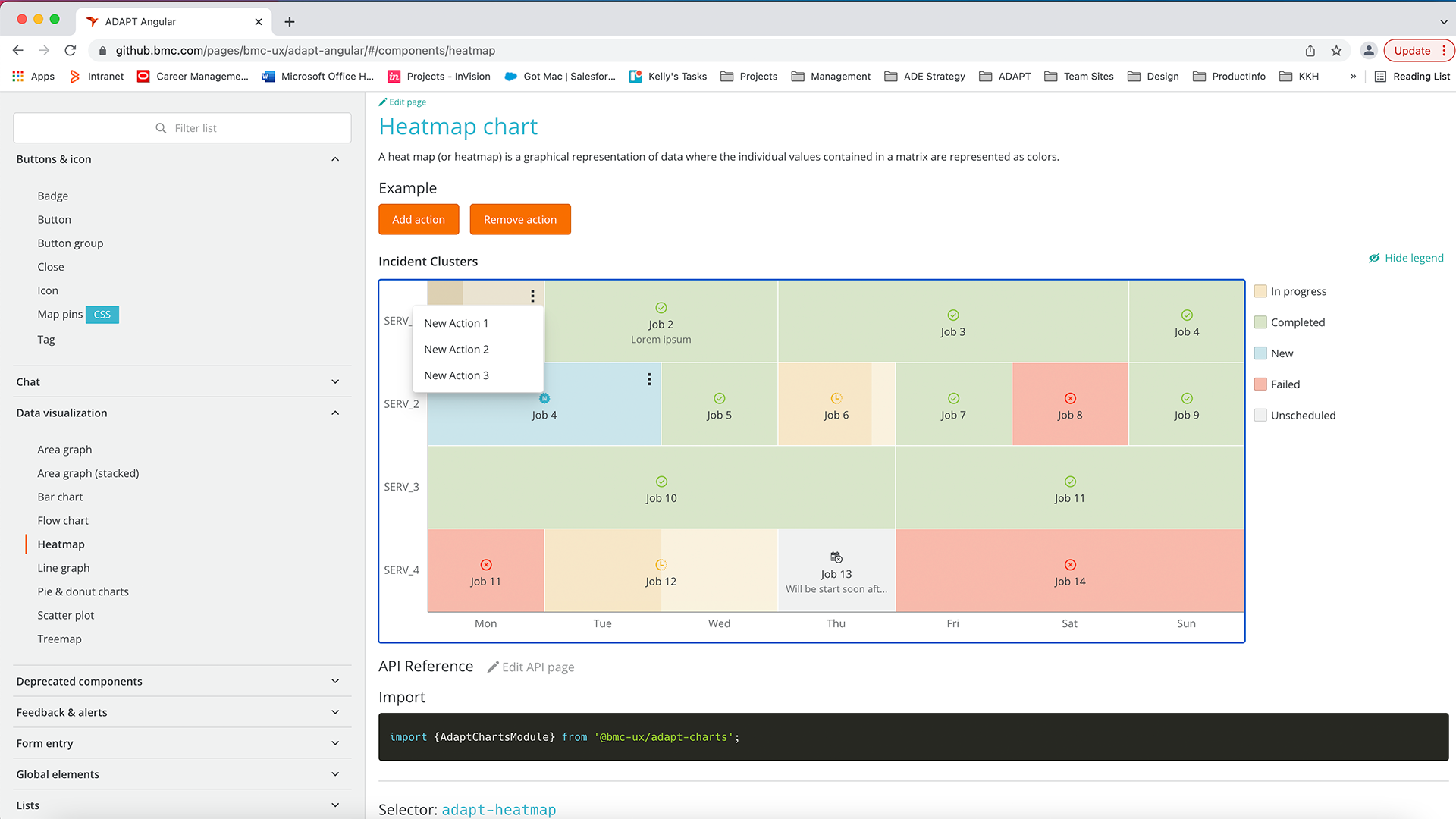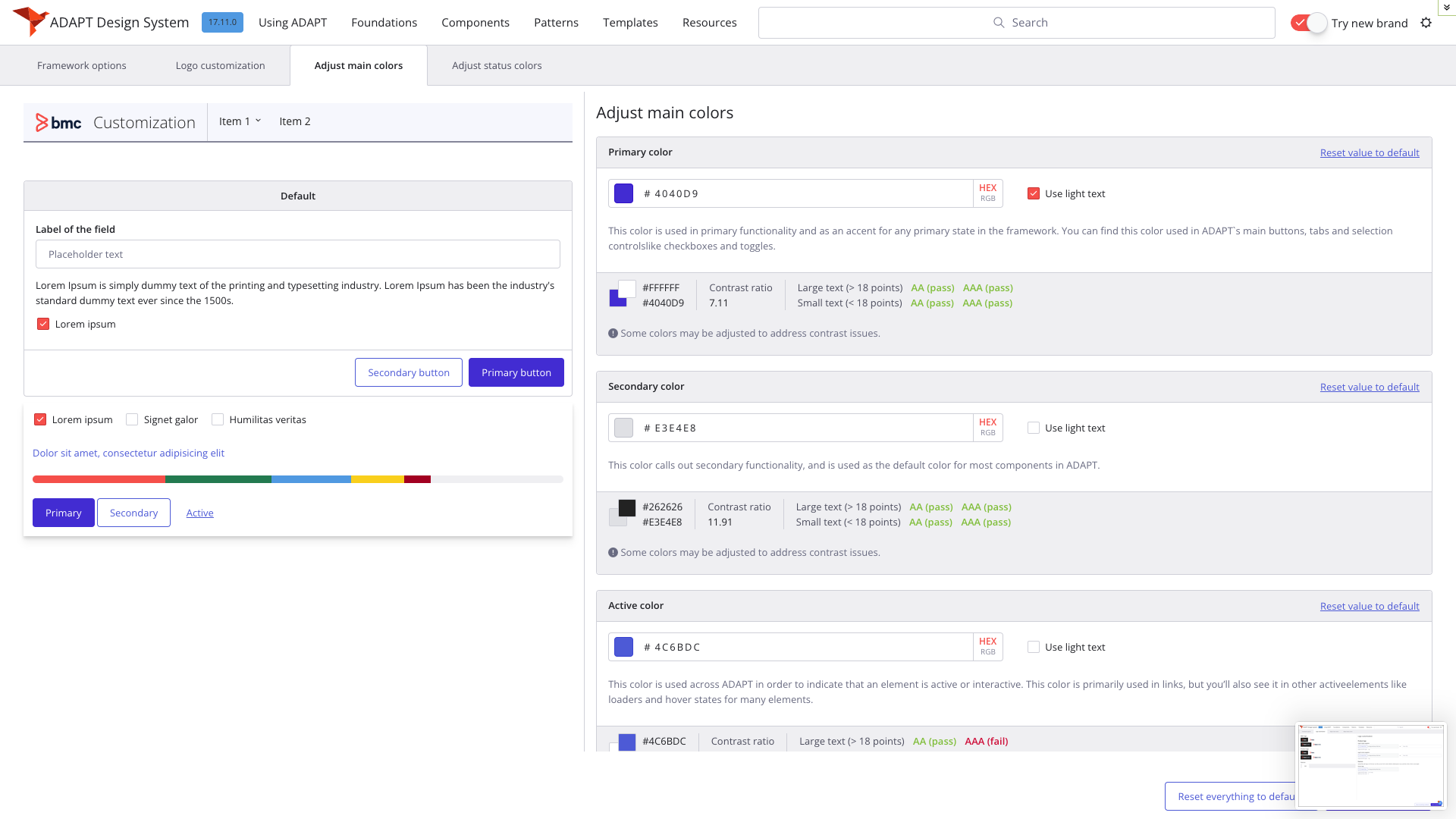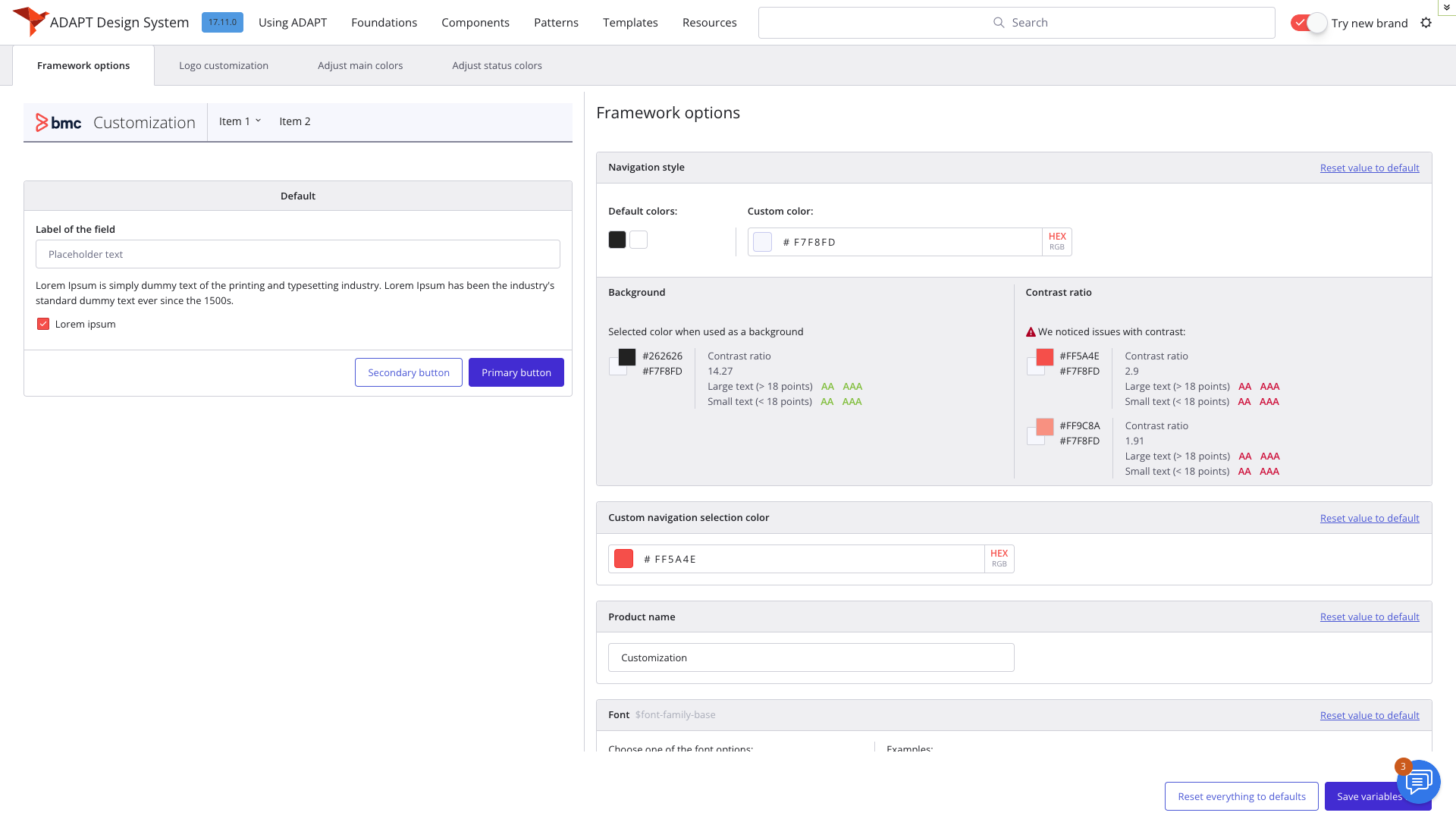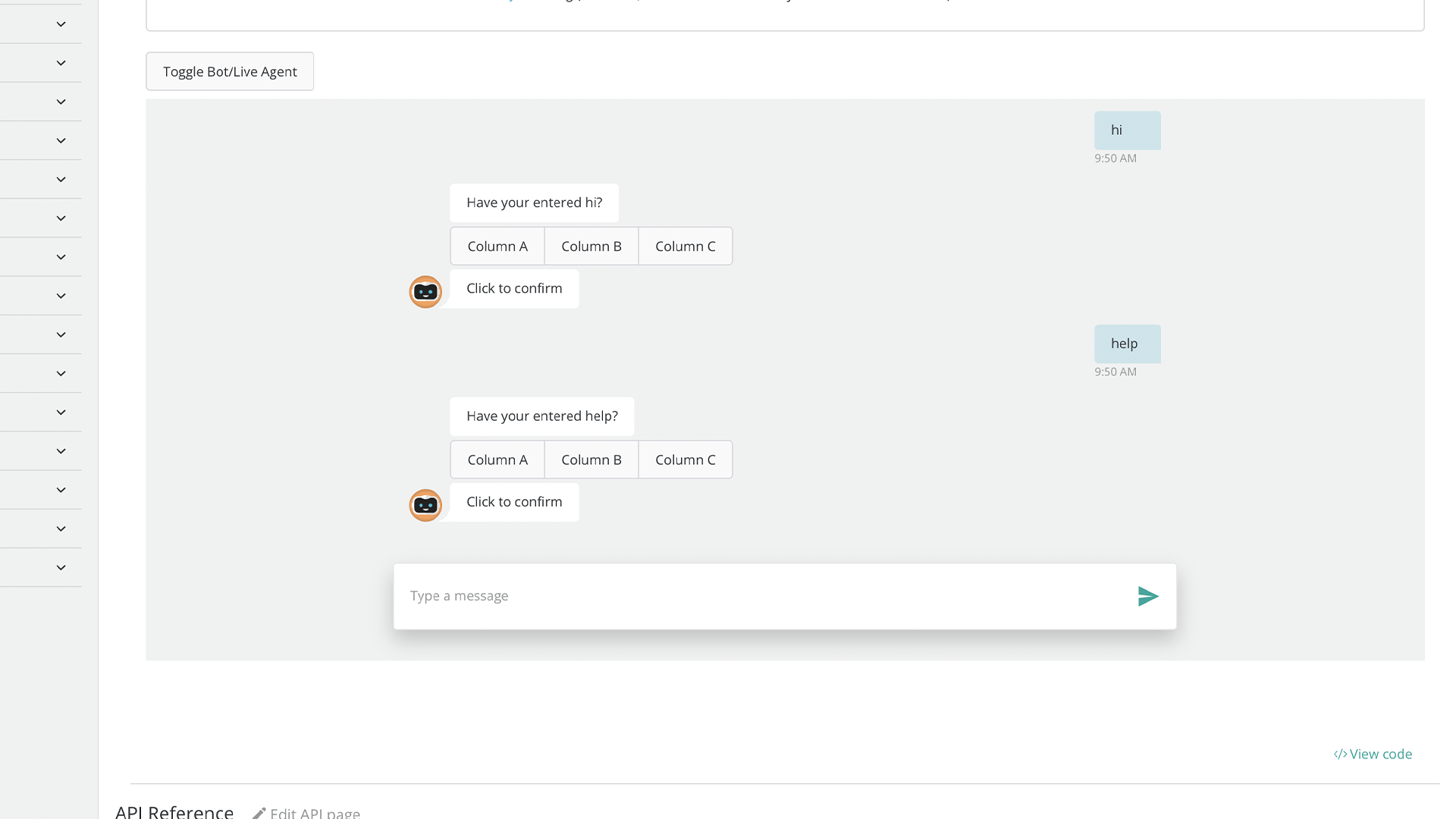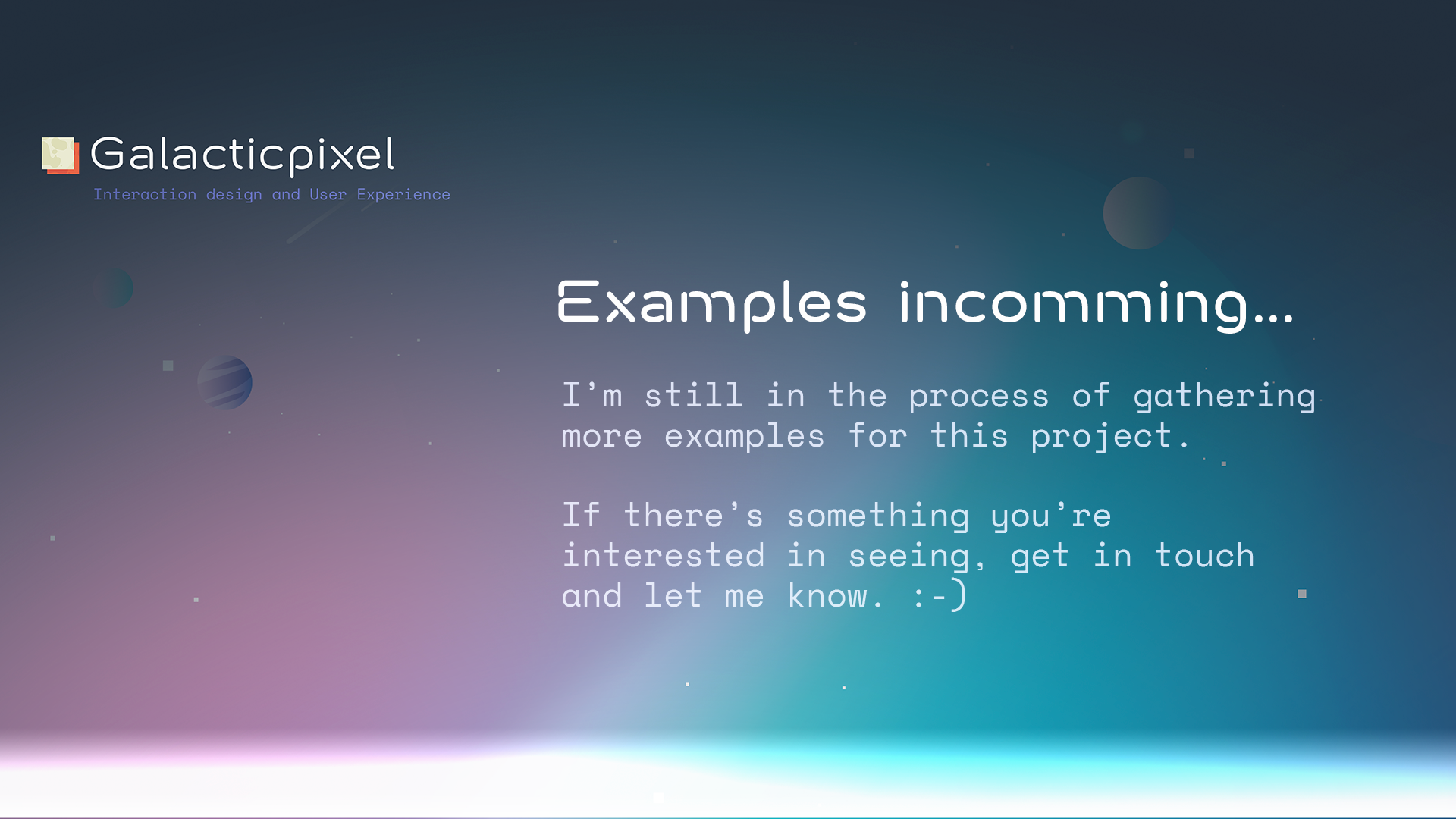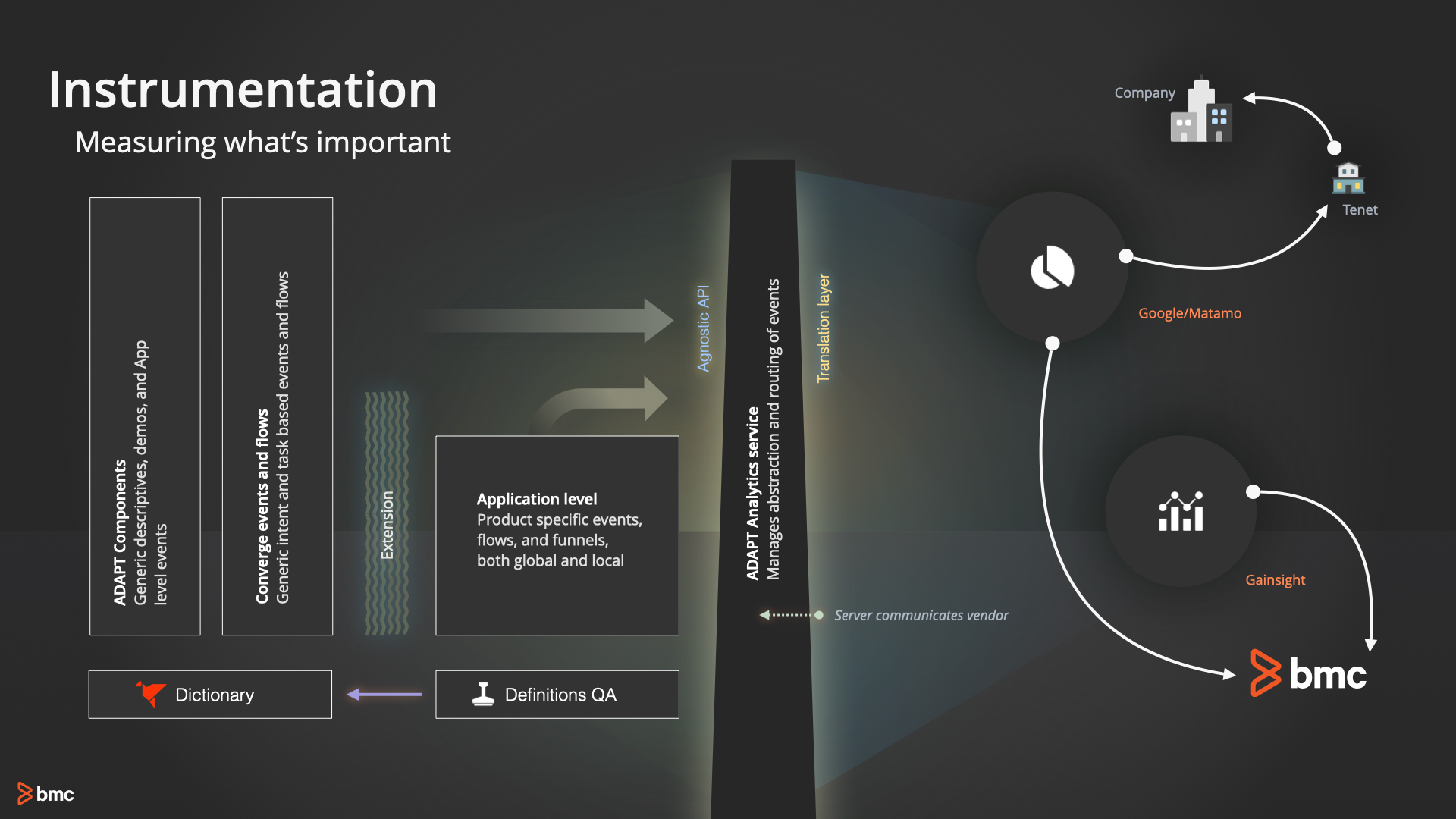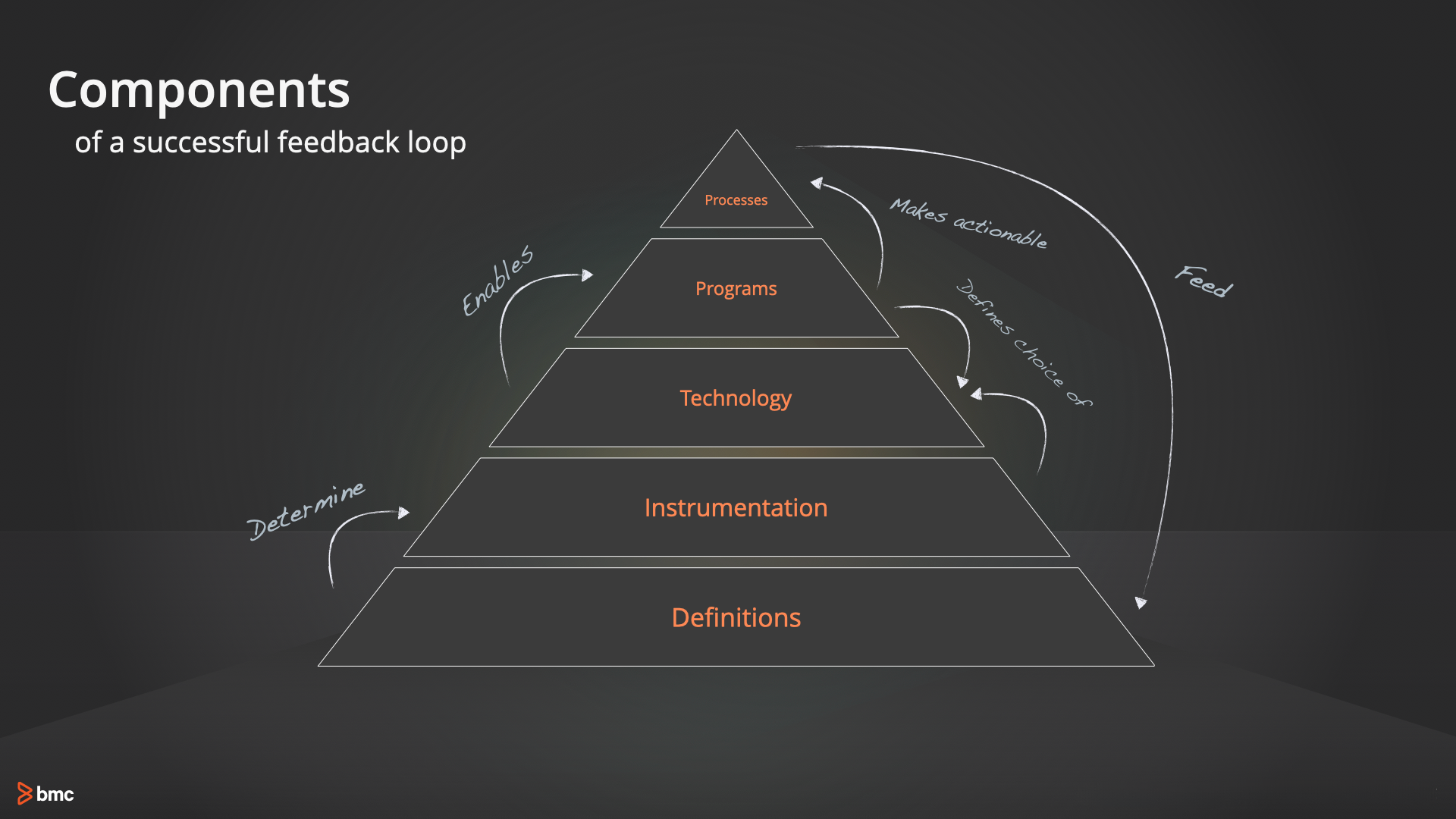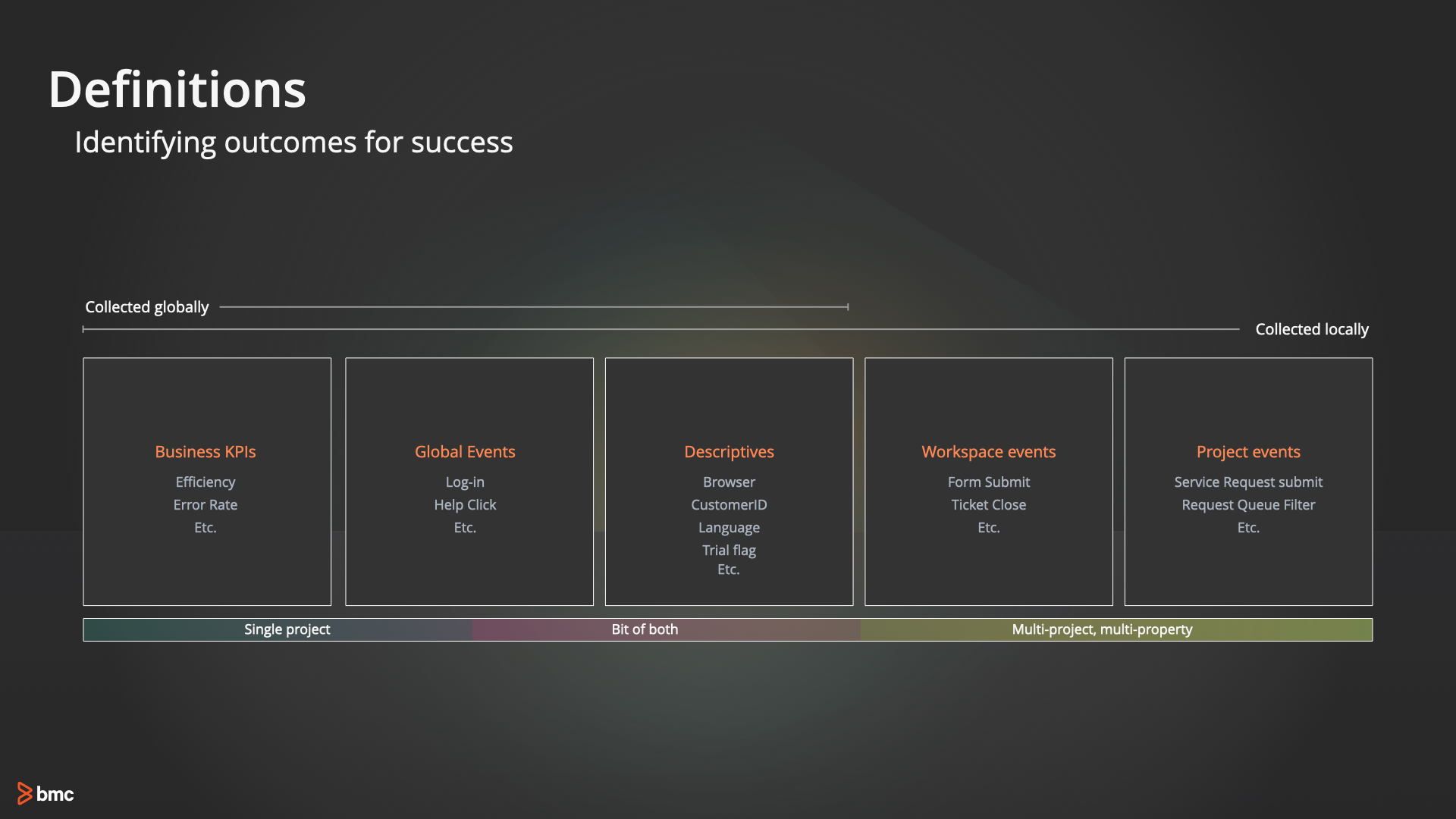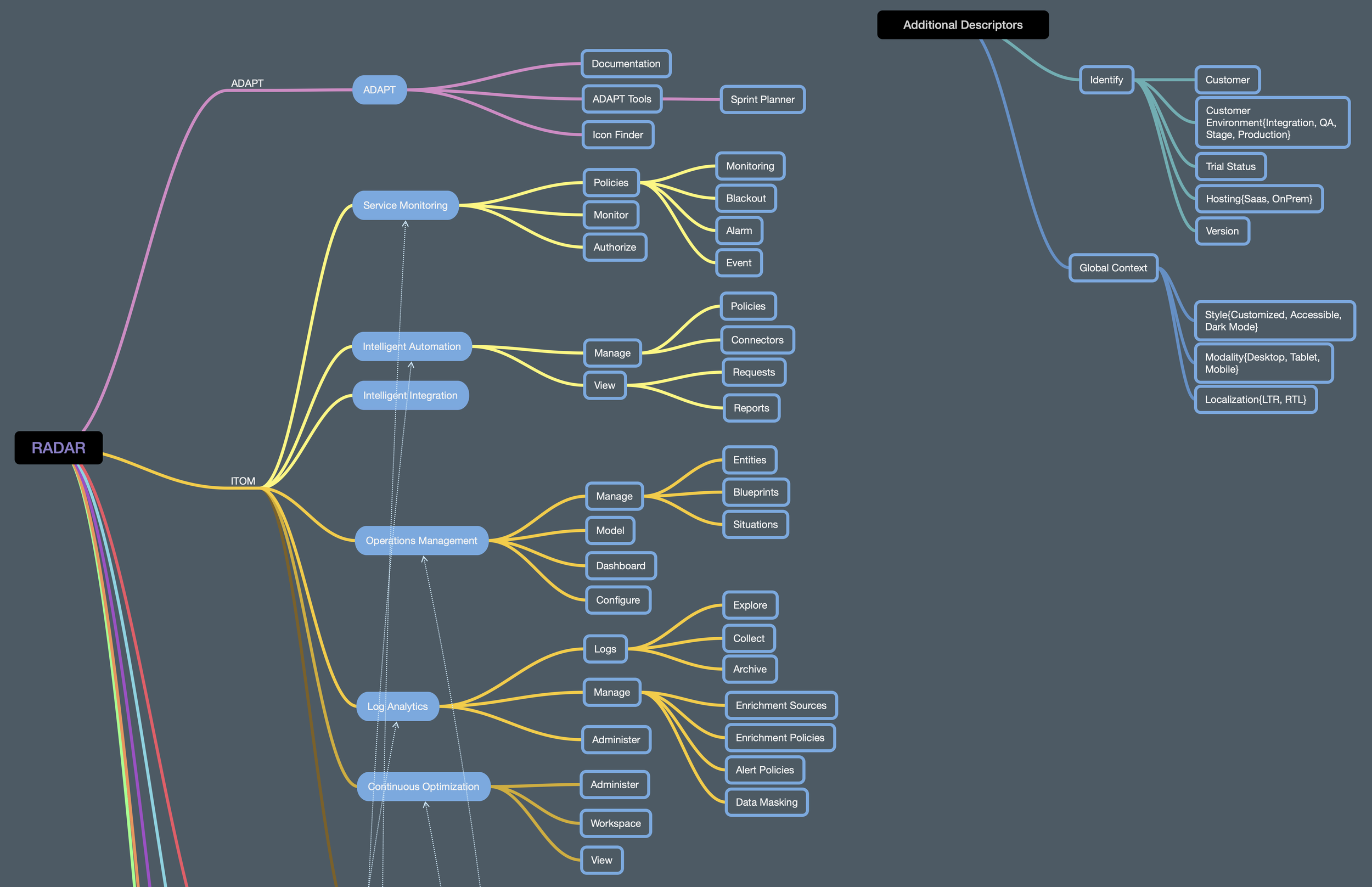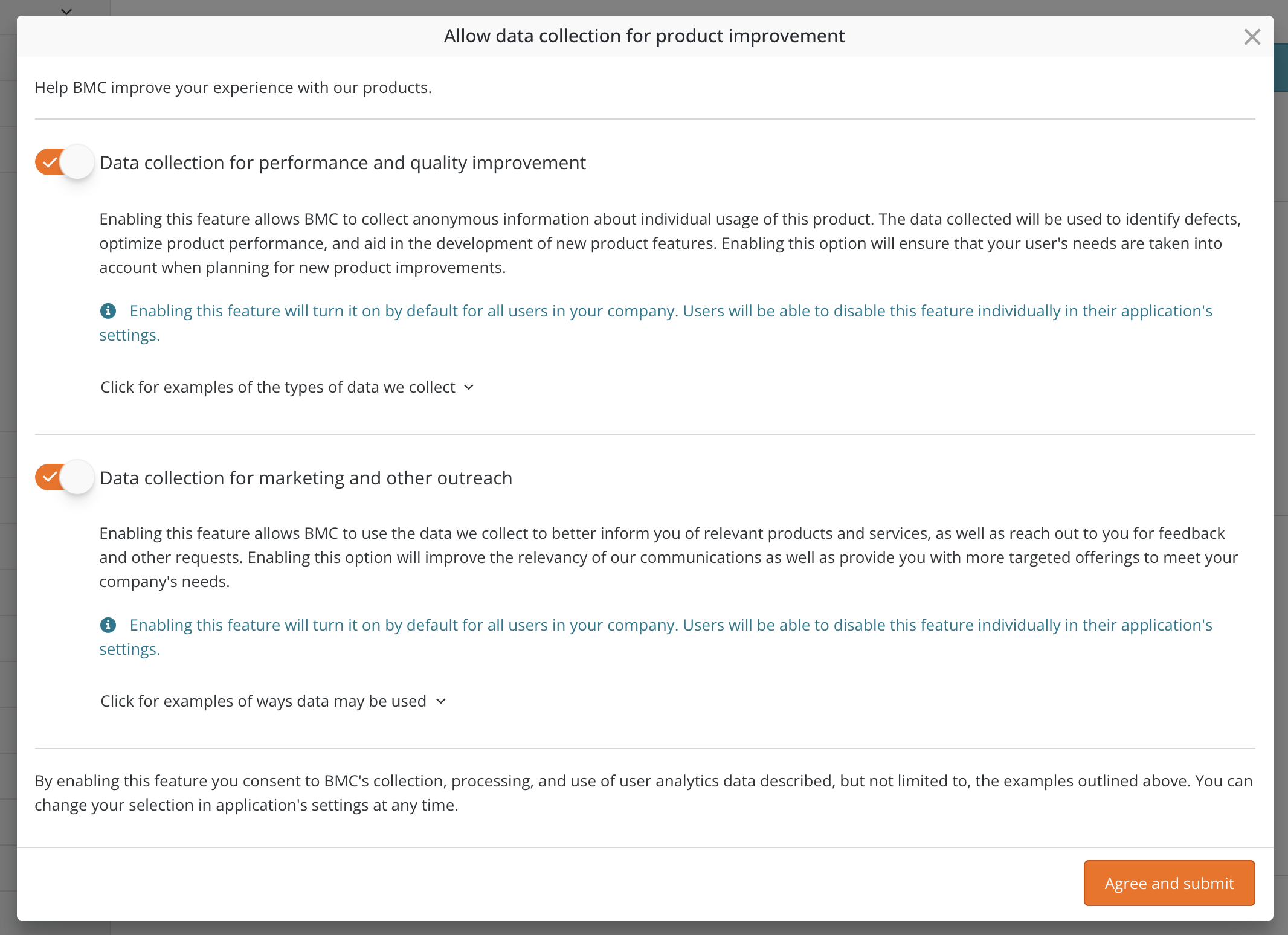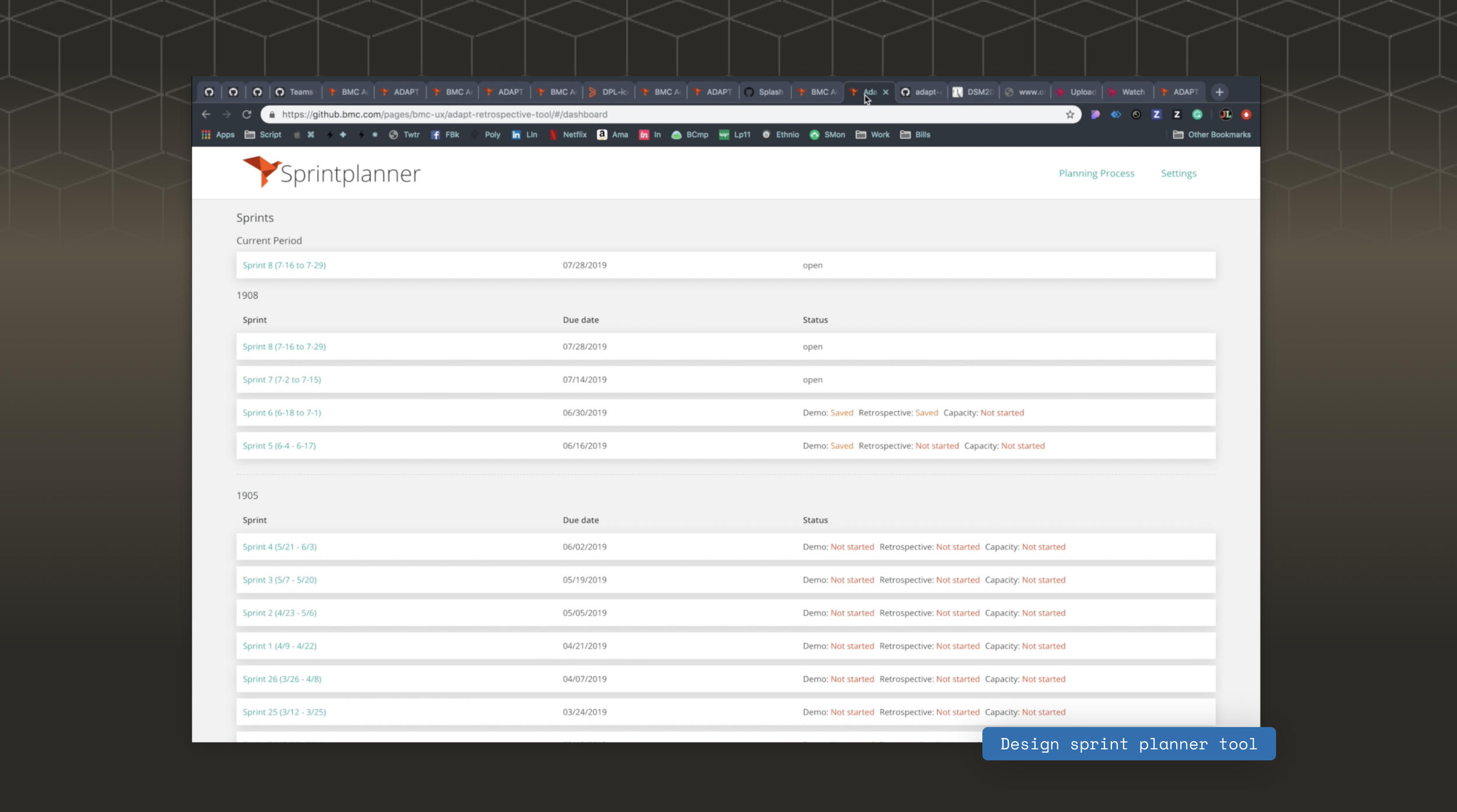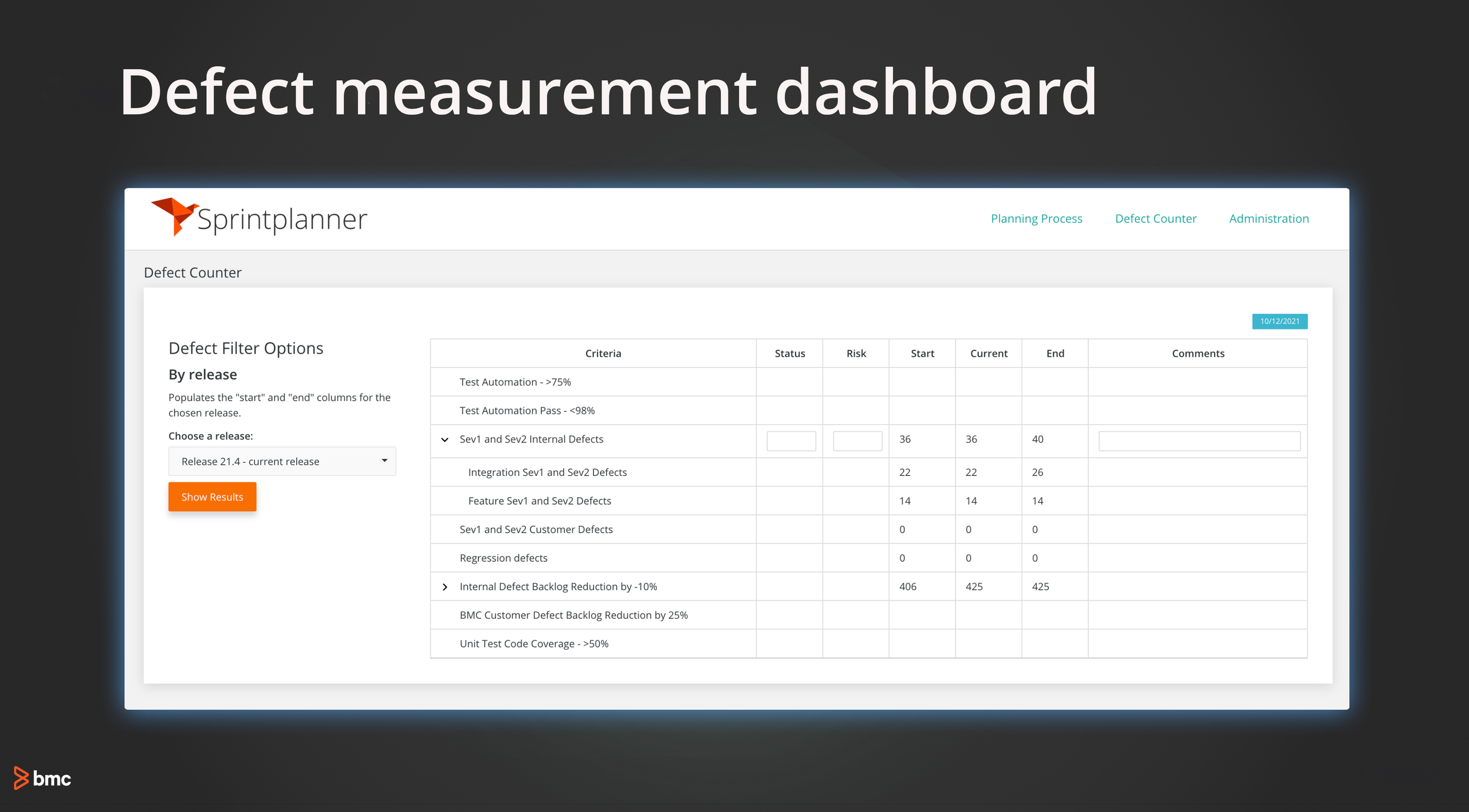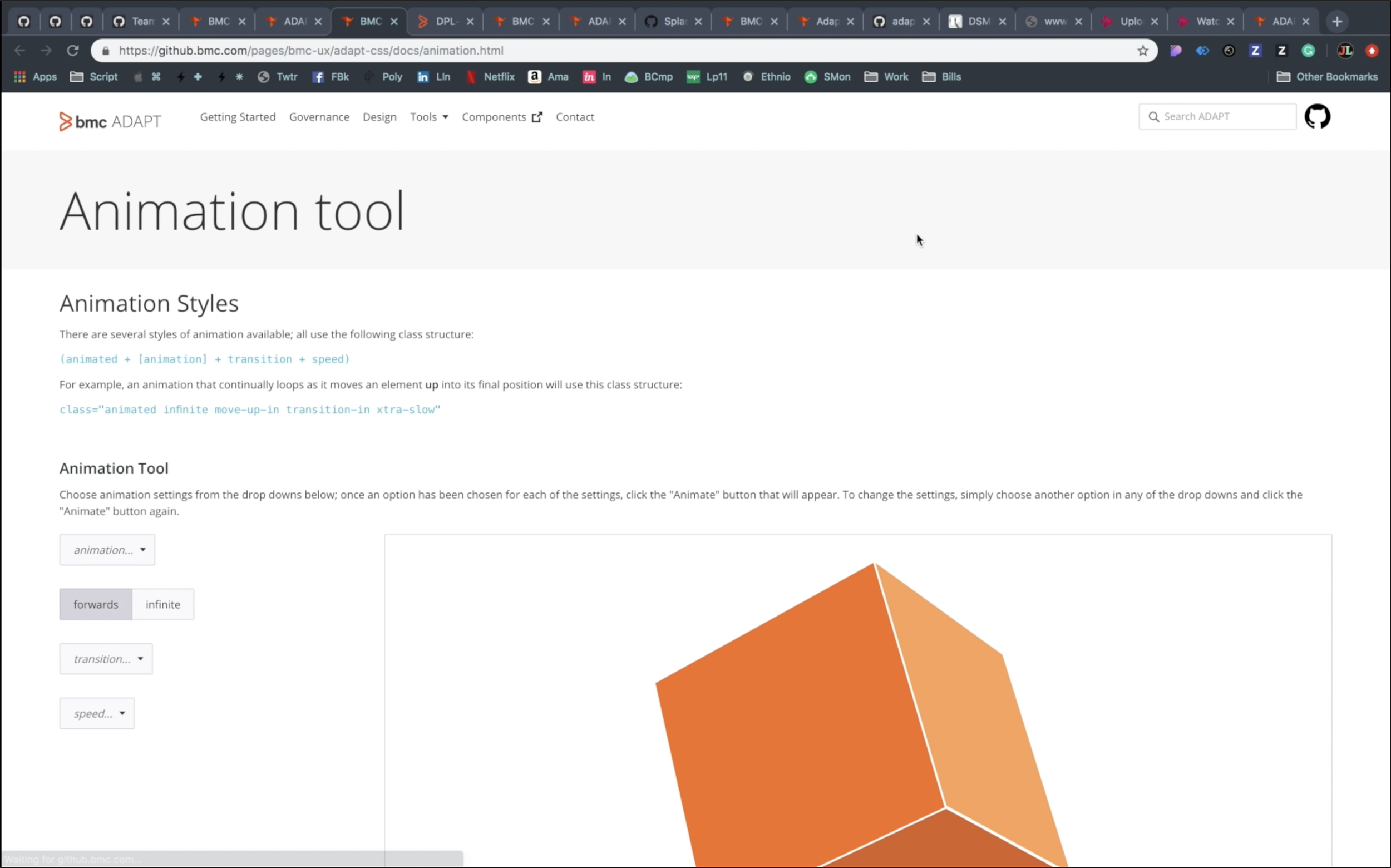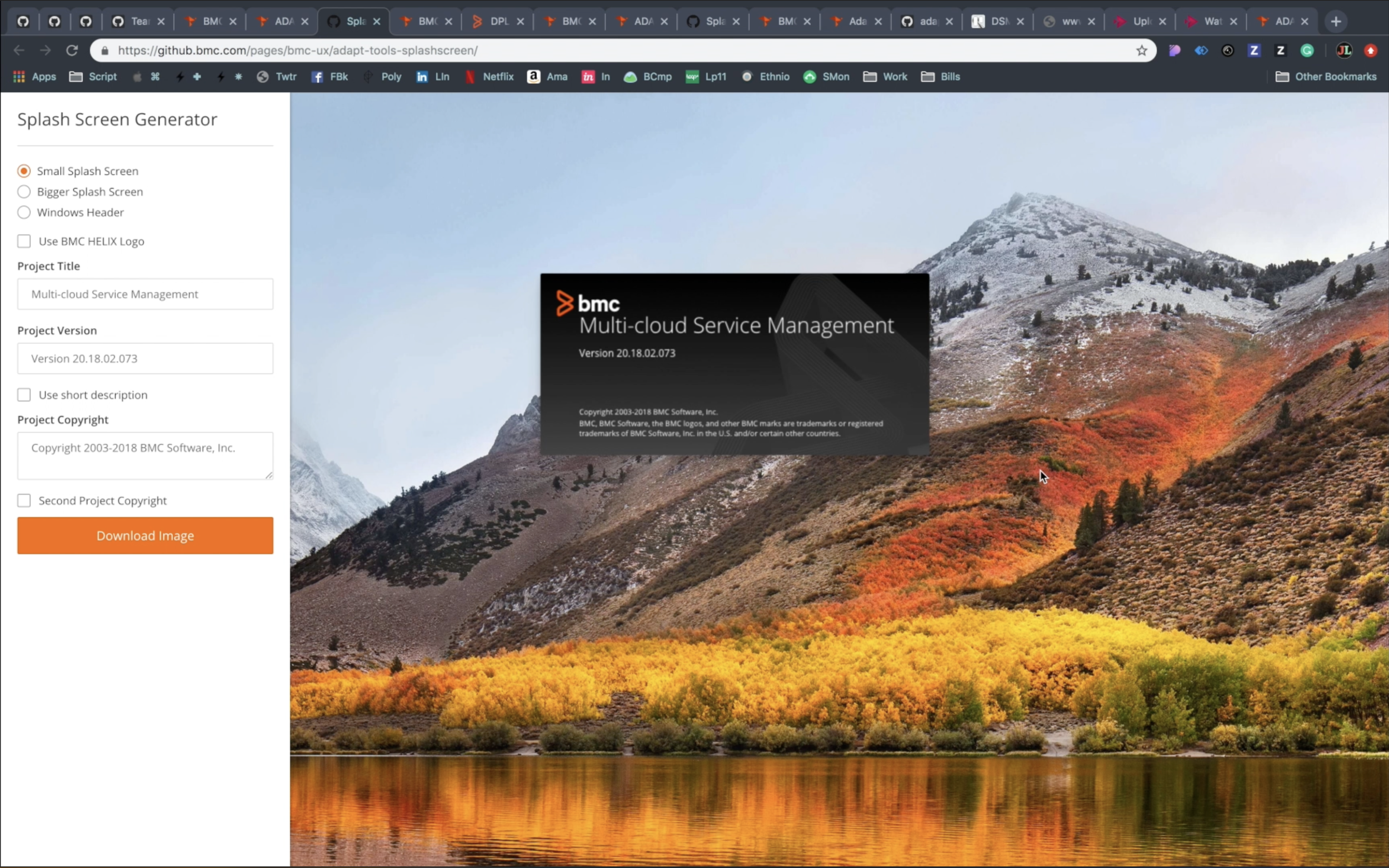ADAPT
ADAPT is bmc’s UX platform, which I established and ran for six years while at the company. The platform consisted of a multitude of tools and services for bmc product teams, including a fully stocked UI component library in Angular and WebComponents, guidelines, Figma/Sketch resources for design, multiple high level patterns, experience-oriented services, and an interconnected data analytics platform. Leading this platform was my primary responsibility at BMC, both as a product owner for UX and as a lead designer. My work was supported by a diverse team of designers, UI developers, production staff, and team managers, reporting through me.
What were we solving for
In my first two years at BMC I was responsible for leading the design of the company’s end-user experience products. This included any product in the portfolio that had a workforce-facing component to it. The main product in this portfolio was MyIT, which I transitioned from an “iTunes for services” model into a smart, events-based platform for you workplace, or a Digital Workplace.
At this time, the company had a very small reference library for some common components used across the product space, but they were rarely used consistently, if at all. Most teams at this point built their UIs using these elements as a style reference, but it was rare that code was snipped from one of the examples and used directly in a product.
The Digital Workplace transition required a lot of the existing areas of the product to go through some significant design change, and it was these changes that brought to light many common issues stemming from a lack of standards in UI development; eight types of buttons that look the same but have different underlying code, development estimates that ballooned as a result of unnecessary and unknown deviations, and UI bugs that were solved in one place but not in others. Having worked closely on component libraries at Amazon I knew the symptoms, and their solution fairly well. So, I worked with the director in charge of UI development, and our PM to reorient the schedule so that we could include component creation, as part of the transition process for DWP. It was from this effort that ADAPT was born.
Goals
Better, more innovative, more consistent products that get to market faster.
Greater ability to understand, and act on, what works, what doesn’t, and why.
Increased presence, and the establishment of BMC as an innovator in the technology space.
The work
Transitioning to a company-wide framework
The framework that was created as part of the Digital Workplace transition was fairly simple, consisting of a translation of Bootstrap components to match up with the small number of component examples in our existing “Design Pattern Library.” The team extended Bootstrap’s utilities-based approach to ensure scalability (DWP was planned to be white-label-able), and templates were created for most of the major component’s in Angular. This approach was simple but highly effective, and by the time we made it to the initial DWP release I was already working with some of the newer products to adopt it as a standard.
Seeing the possible benefits that wide-spread adoption of a framework like this would have, the leadership team in design made the decision to make extending the framework for use in other business a priority for the team. This process involved a lot of up-front work, both in making the existing framework a better fit across the organization, but also in the development of programs, processes, and governance to support the type of community engagement a UI framework at this scale would need to be successful.
Over the next couple of months I led efforts to lay the groundwork for many of these needs, along with leaders in both design and front-end engineering across BMC. These efforts culminated in a rough set of rules, processes, and procedures for both design and development, as well as an initial backlog of components and infrastructure. Once we had a rough proof of concept, budget was allocated from design to place a small team of designers and front-end developers under me to assist with tactical needs relating to growth and adoption.
Basic structure
The basic structure of ADAPT followed a simple architecture, playing largely towards the decisions that were made in the library we started with Digital Workplace. The framework was based largely on Angular, since that’s what 90% of our UI developers in the organization leveraged. We would eventually support other libraries through Web Components (mostly for M&A products), but at the time our architecture governance board decided it would be less disruptive to the overall product roadmap if we kept course.
The components themselves sat on top of a modified version of Bootstrap (v4-eventually v5), with custom, higher-order elements sitting on top of that foundation. More advanced, 3rd party based patterns like data grids (PrimeNG), Gantt Charts (Prime), and Visualizations (D3) made up the upper layer, along with a number of home-grown patterns that were either built or borrowed from other areas of the company. The library also maintained a large collection of tools, services, and utilities, all powered by a highly semantic design foundations layer. Design foundations themselves were designed to be highly permutable, largely because of product requirements for white labeling, but also for the amount of agility it provided in aligning the product and brand sides of our organization, a typical pain point for sales.
The framework itself was able to adapt to a number of contexts of use. It easily supported the typical desktop, mobile, and tablet contexts, but also had support for TVs and hybrid devices, such as touch-screen desktops. Short-term native support was included for our initial base components via Native Script, but the goal was to move most teams over to adaptive web (many of the benefits of native weren’t being realized in product). This was done to drive faster adoption of non-desktop modalities, ensure grater consistency, and allow the team to better bridge services across context in an agnostic way.
Governance
Along with the framework itself, the team iteratively developed a number of processes and programs aimed to fairly, and judiciously govern the direction of the design system. The system we developed relied heavily on cross-company collaboration, evenly applied rules, and a system of checks and balances that promoted consistency without holding teams back or stifling their ability to innovate.
The Framework
The component library itself was highly stocked, including all of the typical consumer components, plus a number of additional elements unique to enterprise contexts. Because data management and intelligence was a core part of most BMC products, the team created a number of specialized form, data management, and data visualization elements for our internal teams to leverage. Communication and messaging was also a large part of the service desk experience, and so we also had a robust library of messaging and chat tools for designers in that space. Services and utilities were leveraged heavily throughout the system, both as a way maintain consistency, and as a way to allow non-destructive innovation when needed.
To support knowledge management needs across the team, ADAPT maintained a centralized documentation site that held specifications, code, examples, and guidance, as well as design-related artifacts coming from user research, content, and our other internal partners. The team also maintained design libraries and templates for Creative Suite, Sketch, inVision, and later Figma, which became our de-facto design tool over time. Asset libraries for icons, illustrations, and BMCs brand assets and guidelines were also housed there.
Some component animation compositions from design iteration.
Some code sketches for early component styles and interactions. I used these mostly to establish look and feel, rather than represent any final result.
See the Pen Jab, CAM02 by Jeff Lerch (@lerch015) on CodePen.
See the Pen Modified shadows by Jeff Lerch (@lerch015) on CodePen.
The Patterns
On top of the more basic components, ADAPT also contained a robust set of repos dedicated to more complex patterns used across our products. ADAPT’s approach was conceptually close to what you’d find in atomic design, at least in terms of how things accrued towards higher levels of complexity, but it differed in that the levels themselves were focused on the types of needs we were supporting, rather than the way that elements were structured. As such, components were seen as UI elements supporting specific interactions, whereas patterns were task-supporting elements that might require more than one interaction to fulfill a task. Higher order elements were supported as well around specific goals, like submitting a ticket, and specific pieces of work, like configuring the overall branding for your suite of products. By the time I left BMC, the library had about ten major patterns, including advanced data grids, Gantt charting, Events, and advanced topology patterns. Higher-level elements existed as well, typically for shared workspaces across single lines of business.
Many of these elements were identified and iterated on through a program I instated called Converge, which was essentially an ambassadors forum across the various businesses areas of the organization. In the Converge process, team leadership would be allowed to present or propose common patterns, or larger elements, that were in flight and broadly applicable across teams. Proposals would be prioritized by the team and, if resourcing was available, both the team and ADAPT would co-create the element as a general pattern that the requesting team would eventually integrate and test in their product. This approach typically ended up leading to a win for both sides, as ADAPT would be able to better build it’s capabilities through co-creation with our users, and individual teams would get assistance and maintenance support for some of their larger UI elements. This process also created a number of additional innovation opportunities in both directions, as new perspectives were brought into and out of the team on a fairly constant basis.
The Broader Platform
Due to our charter as a platform for user experience, the ADAPT team frequently took advantage of adjacencies to the design system to power other tools and services that broadly had an impact on the quality and experience of our products. Some of these things were home grown tools that we were using that we sourced across the organization, like our ZenHub/Github-based sprint planning application or or the roadmap-alignment tools we developed to prioritize our work across the organization. Others were more purpose-based, tools like splash screen generators, illustration builders, and our white labeling interface.
The largest of these was RADAR, an analytics platform built on top of ADAPT, that leveraged our components to ease the instrumentation of our products and set the company up to both develop and track experience KPIs at multiple levels of the business. The platform itself was agnostic, due to scale, technology, and regulatory needs, but the default configuration was done in partnership with Gainsight, which allowed us to add the data we were tracking to the company’s broader data lake. This allowed for post hoc analysis against other forms of telemetry across the company, and gave the design team the ability to correlate experience outcomes with outcomes from sales. For most teams, global instrumentation occurred out of the box, as long as you had a key and were using ADAPT. The platform also self-adjusted for GDPR, and worked in both cloud and on-premises scenarios, albeit with a slight lag in the later’s case.

Outcome
As of 2024, ADAPT is still the standard, and now mandated, UI library in use across BMC. Many of the tools and features of ADAPT have lent to, not only to a more cohesive user experience across BMC’s products, but also many new innovations that were bootstrapped from ADAPT services and tools. ADAPT was also responsible for many efficiency gains, including a ~30% increase in UI development velocity (from the availability of initial measurement), vastly shortened proposal periods, and a reported 2 day decrease in design production time needed per week. By the time I left BMC in 2022, the team had grown from a small group of 2 designers and 2 developers to double the design staff and quadruple the development staff, largely at a time where most teams at BMC were going the other direction. ADAPT has also stood as a procedural model within BMC, with the team frequently being recognized for the efficiency, quality, and responsiveness of its development and management processes. For my part for founding ADAPT, I was the first designer in BMC’s history to receive a CRE award, which is the highest recognition the company gives to non-commissioned employees.

